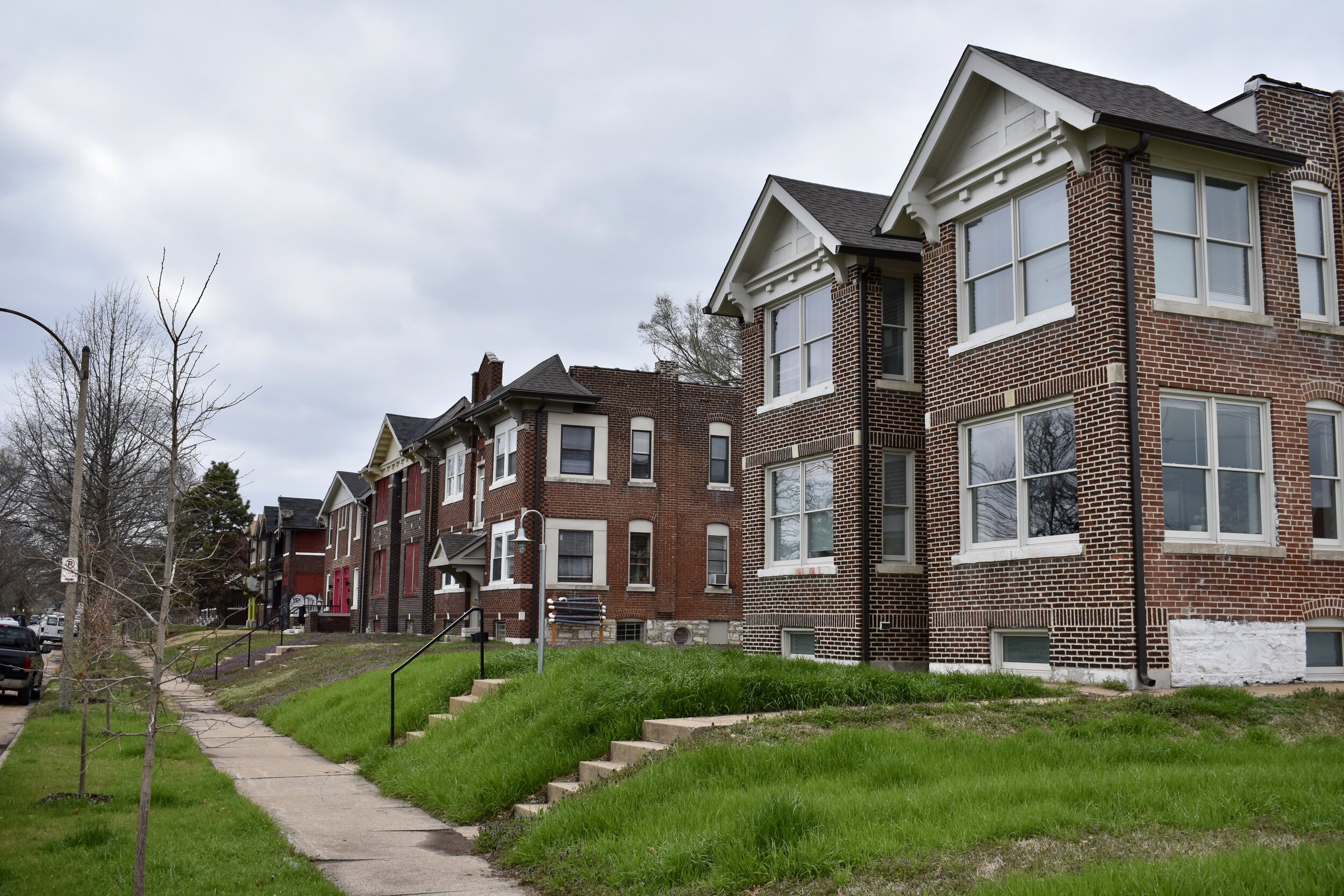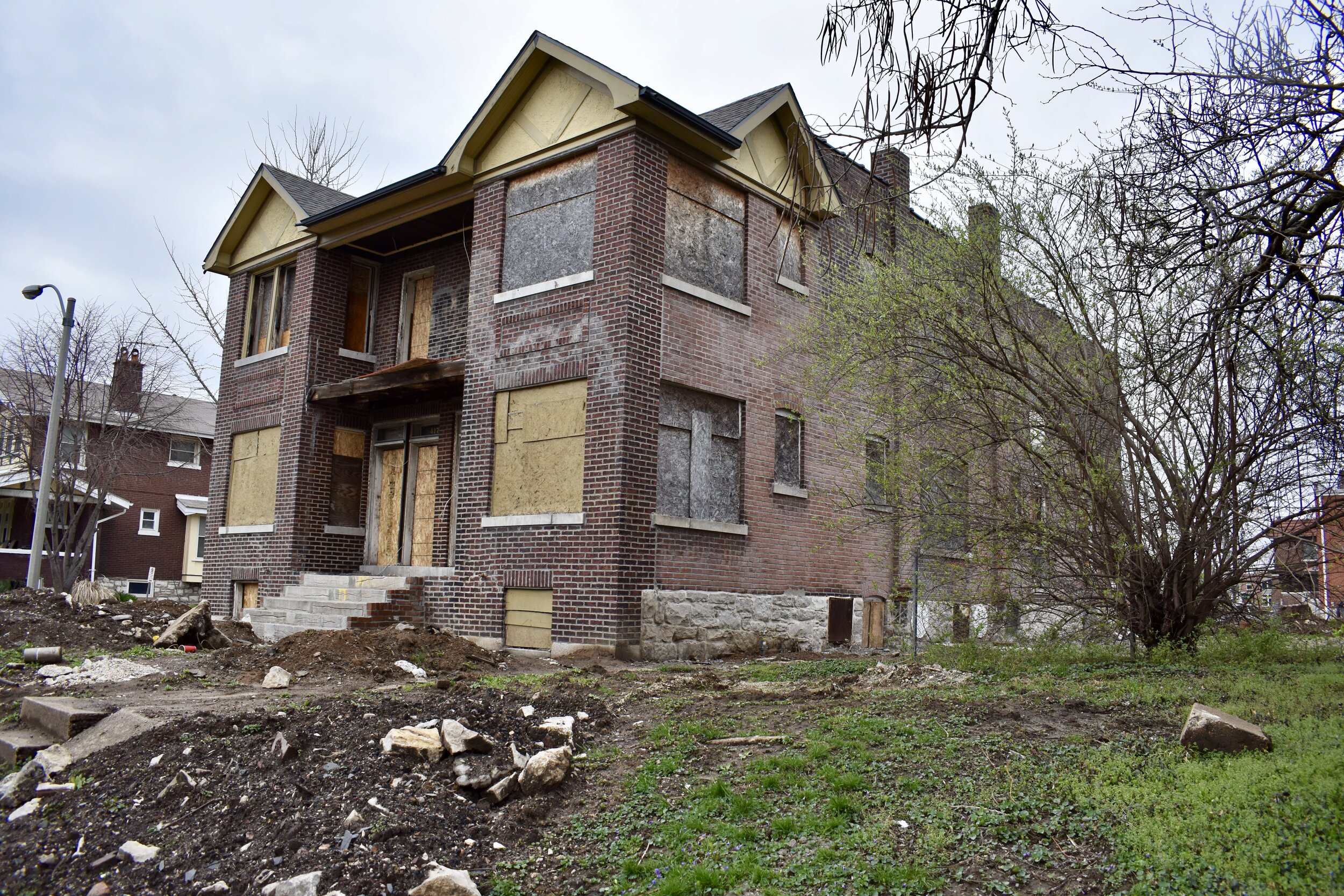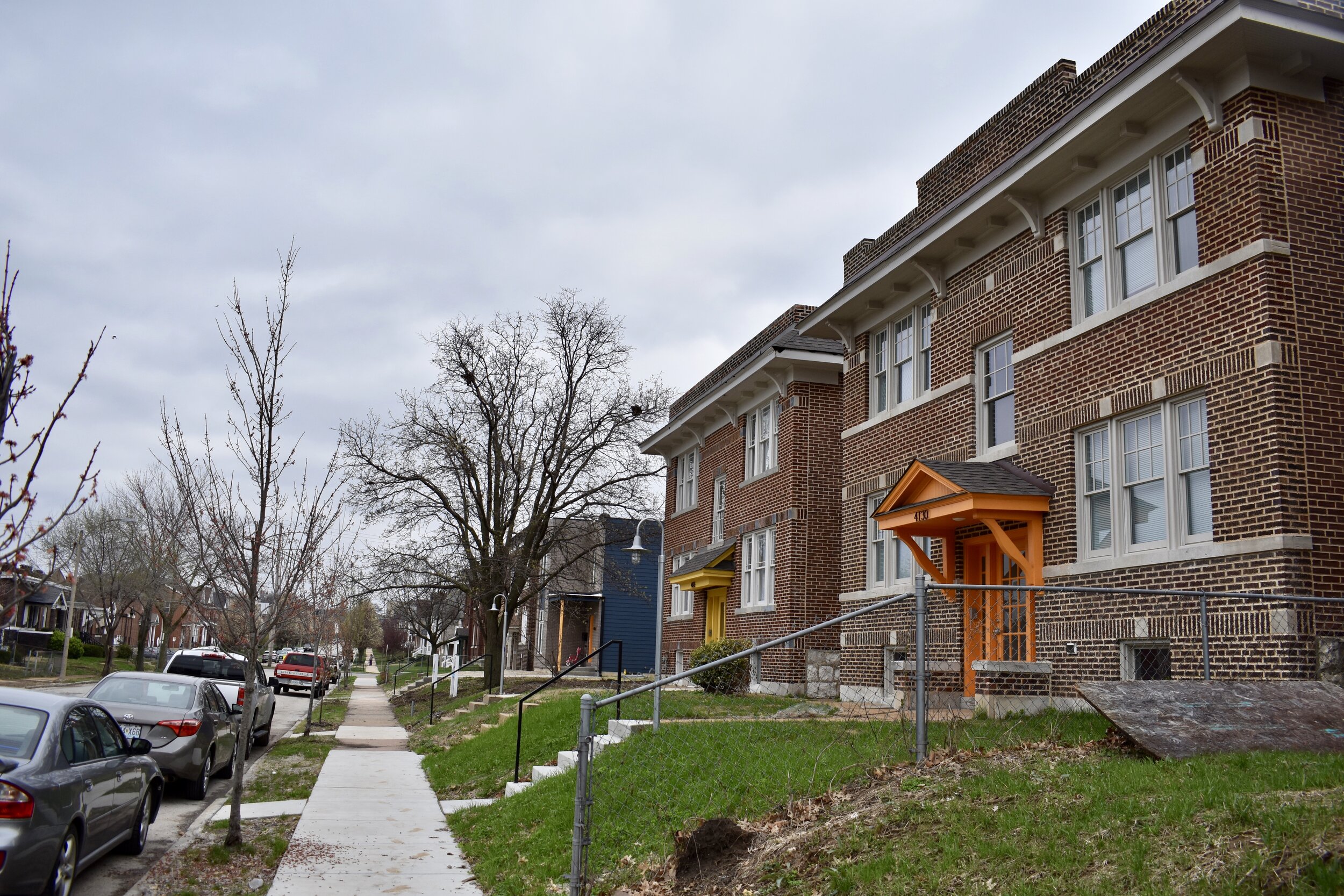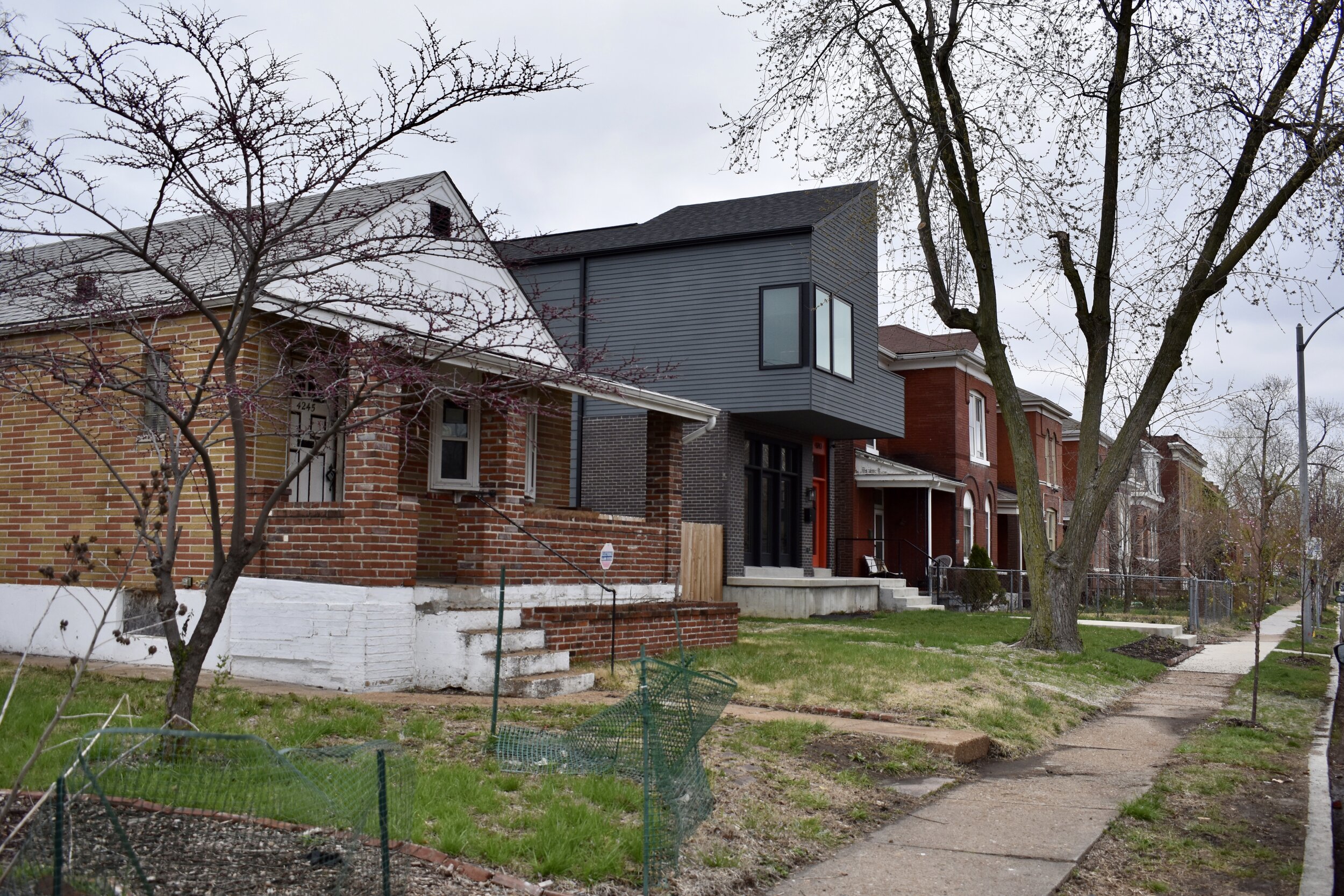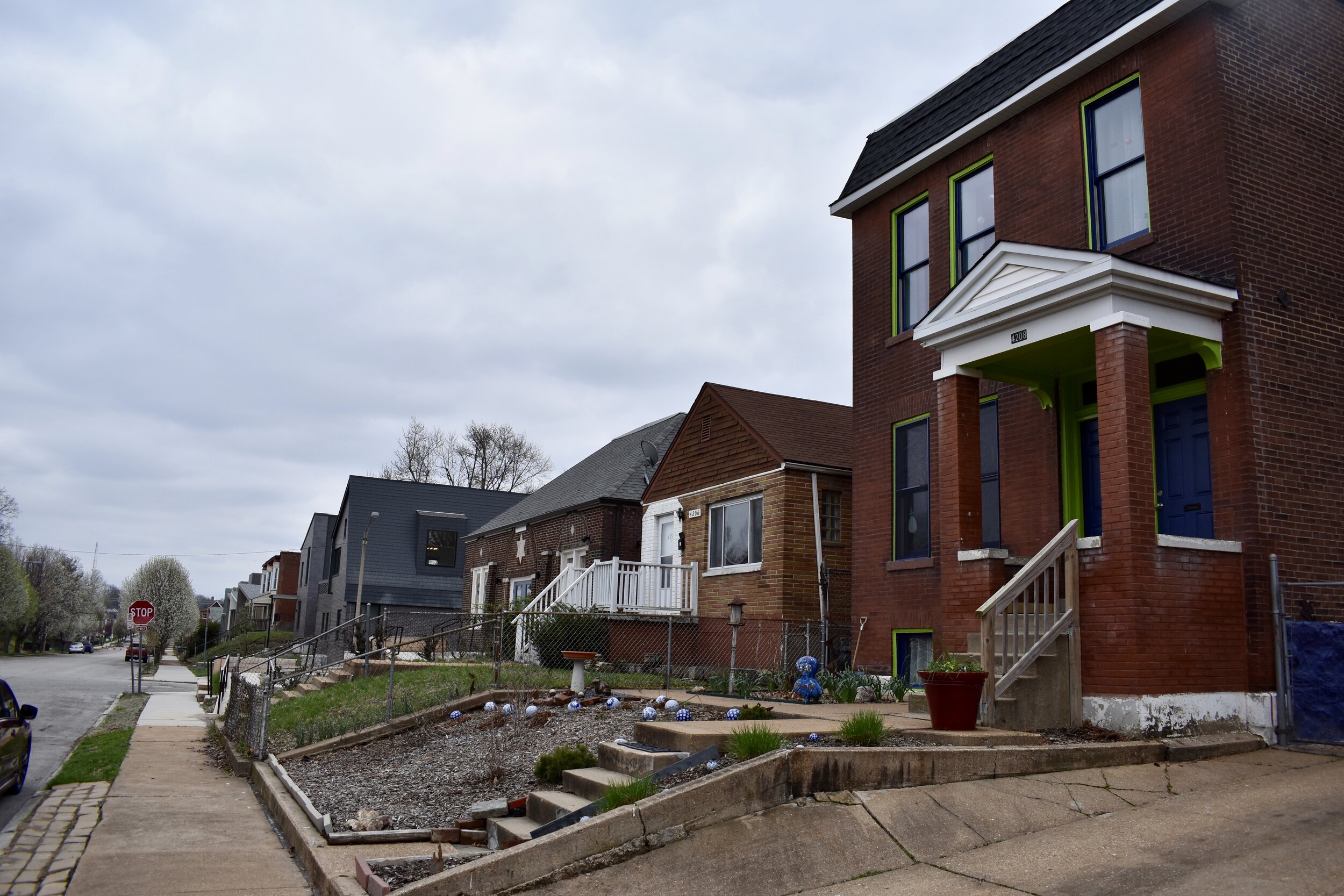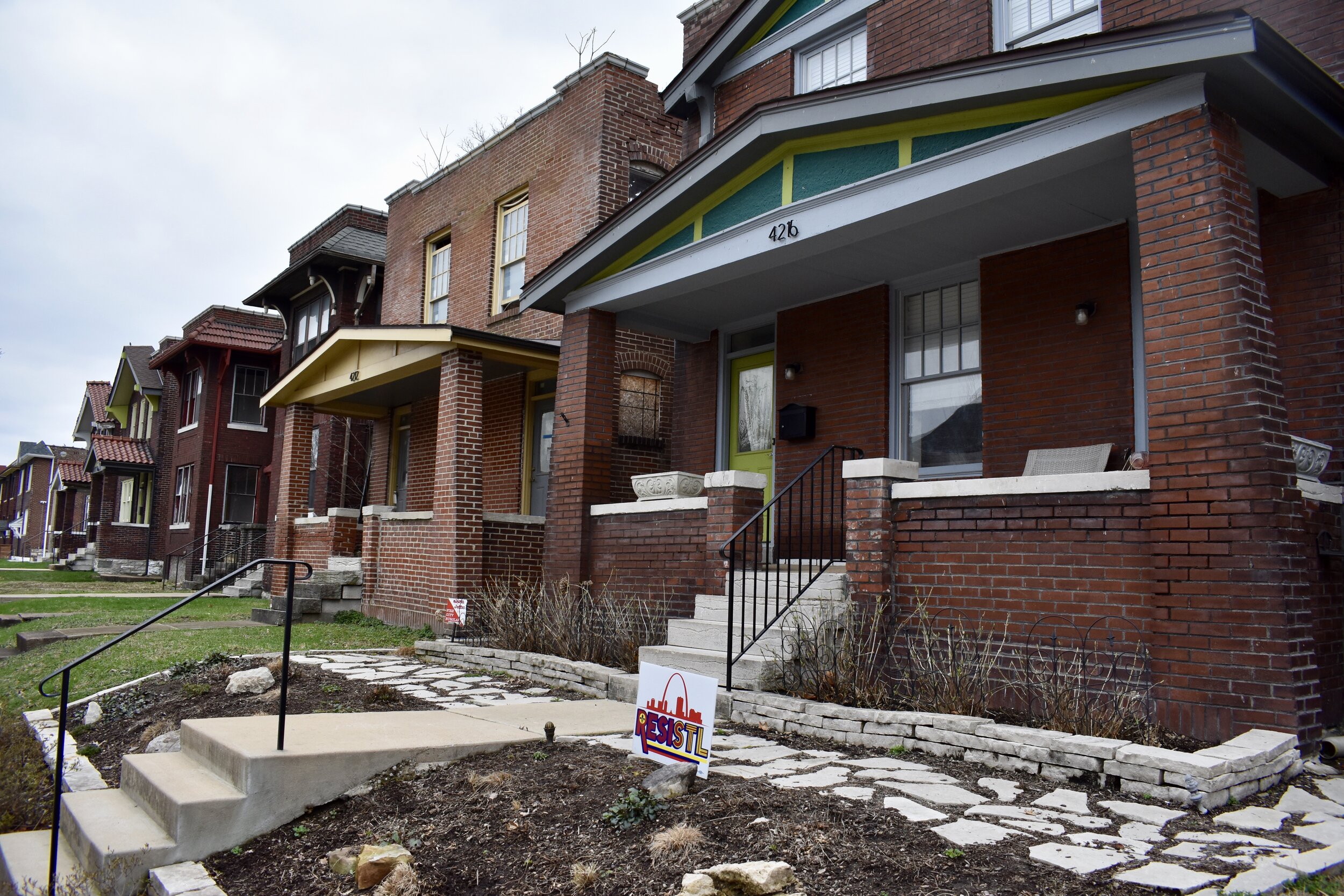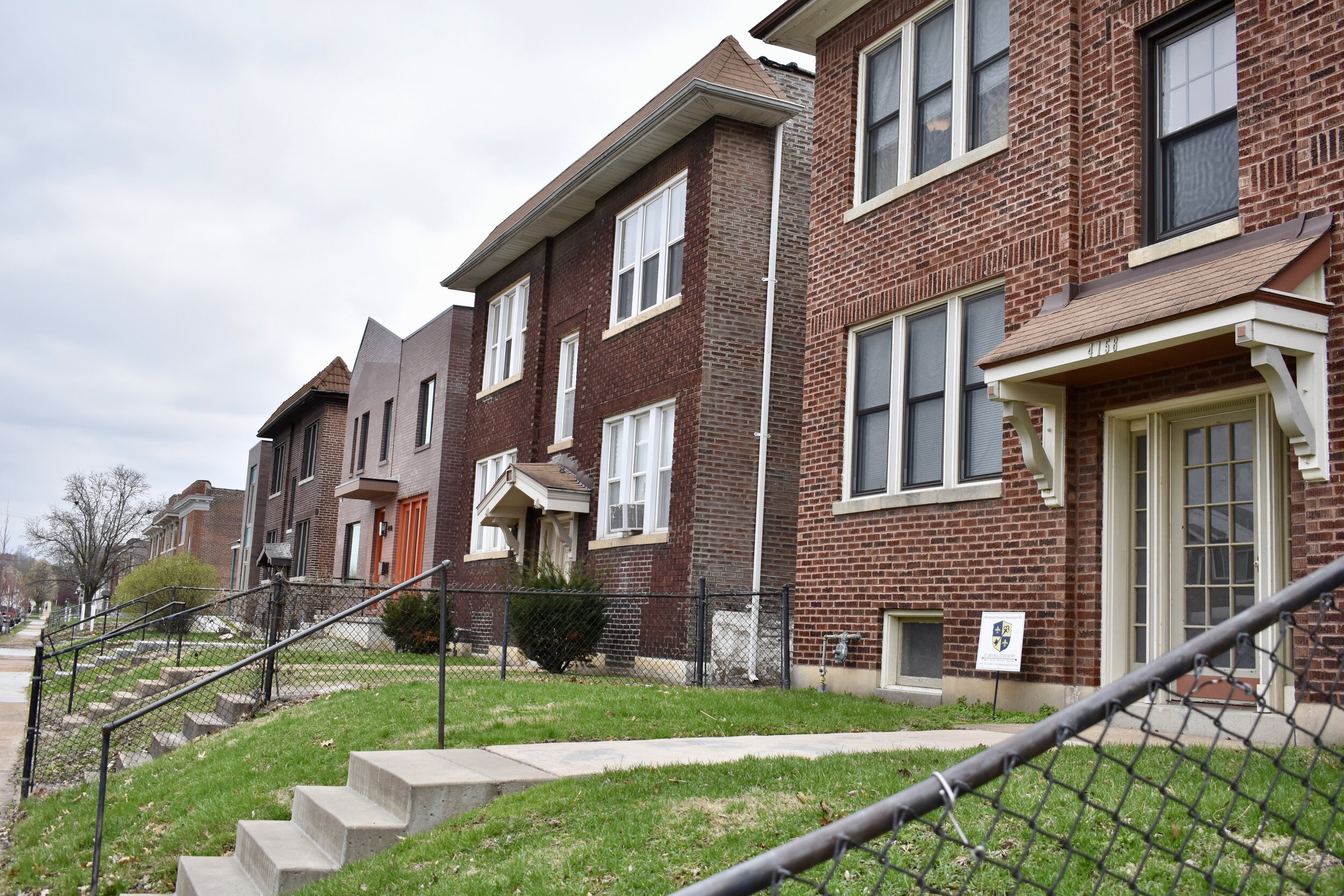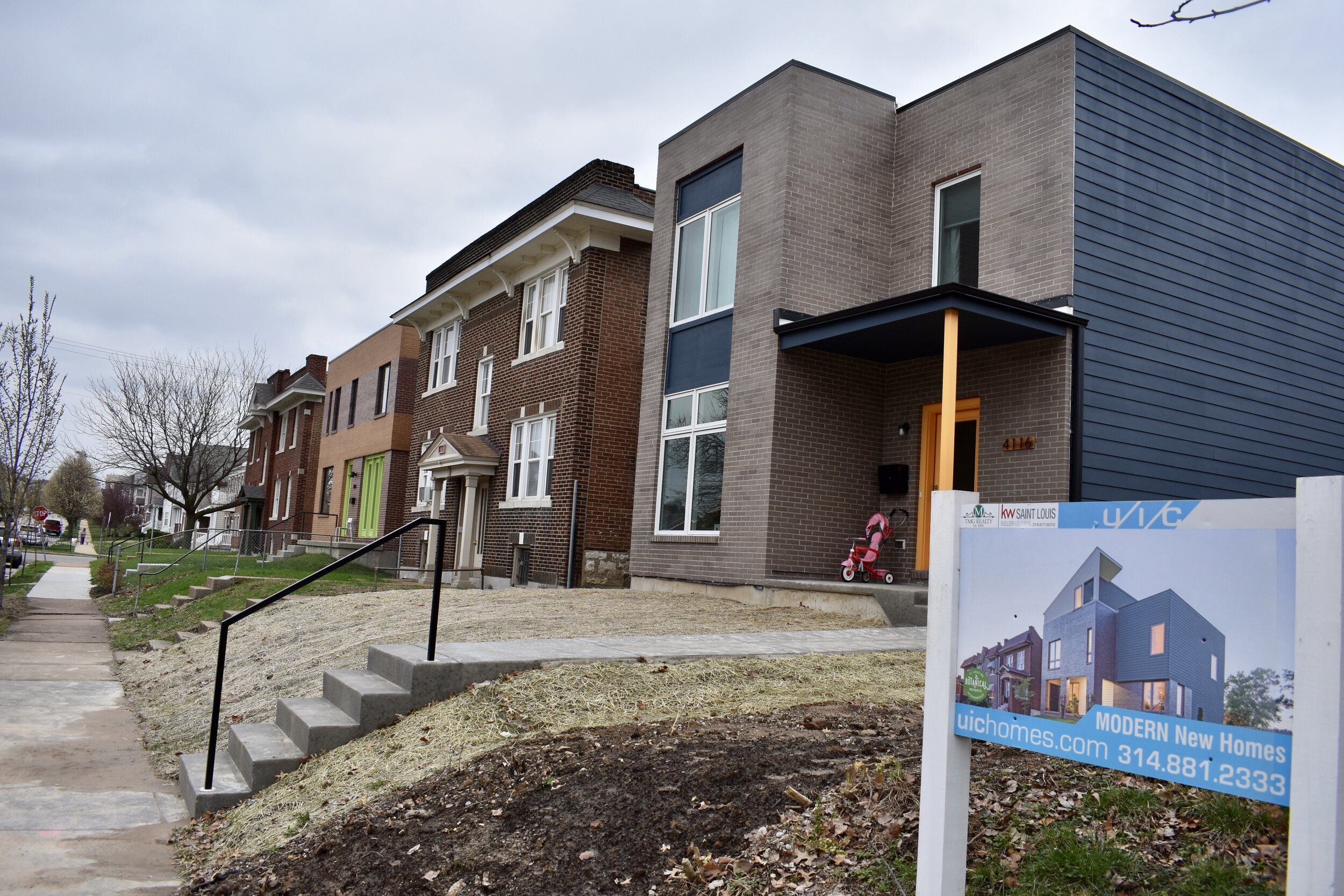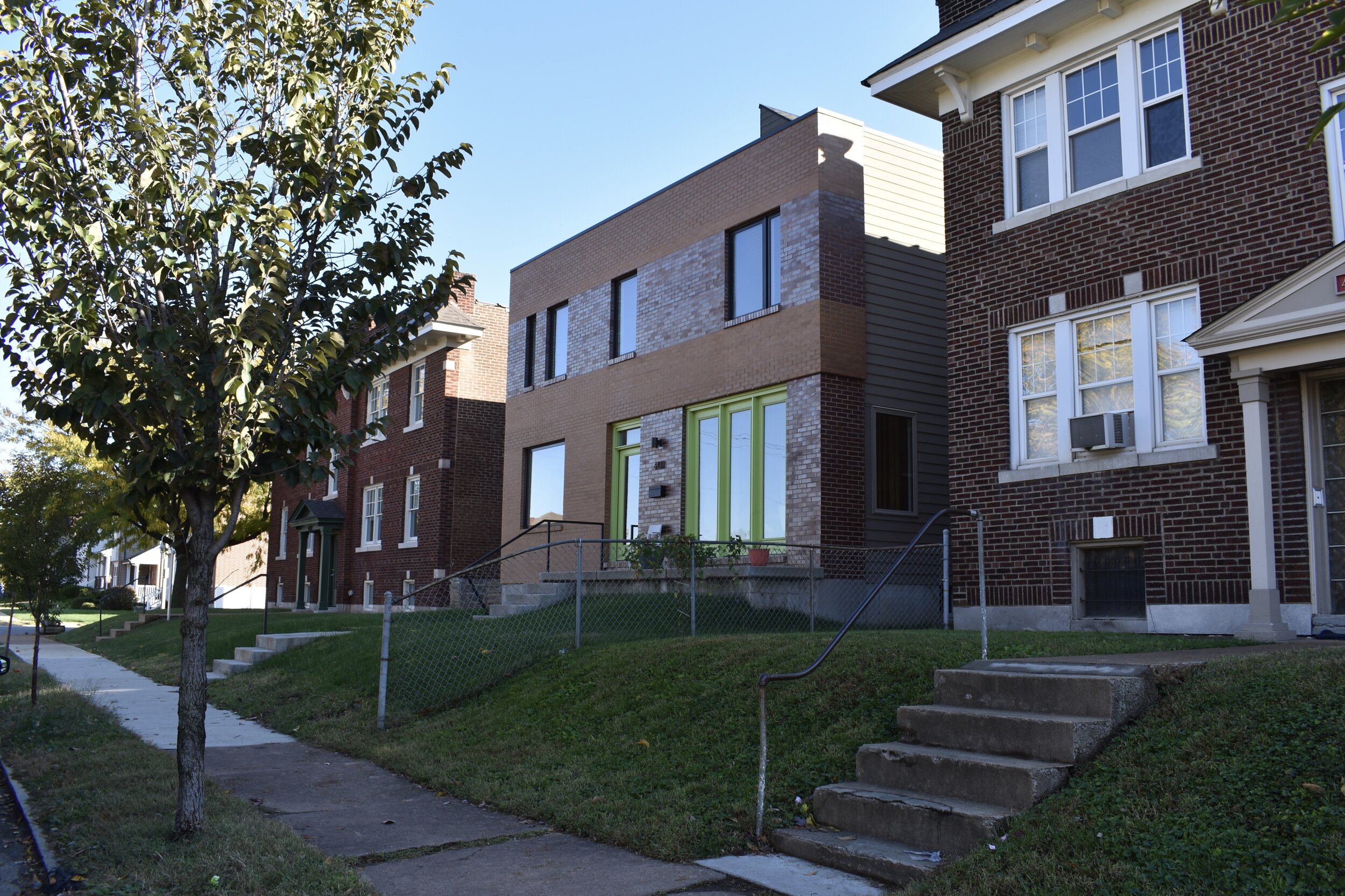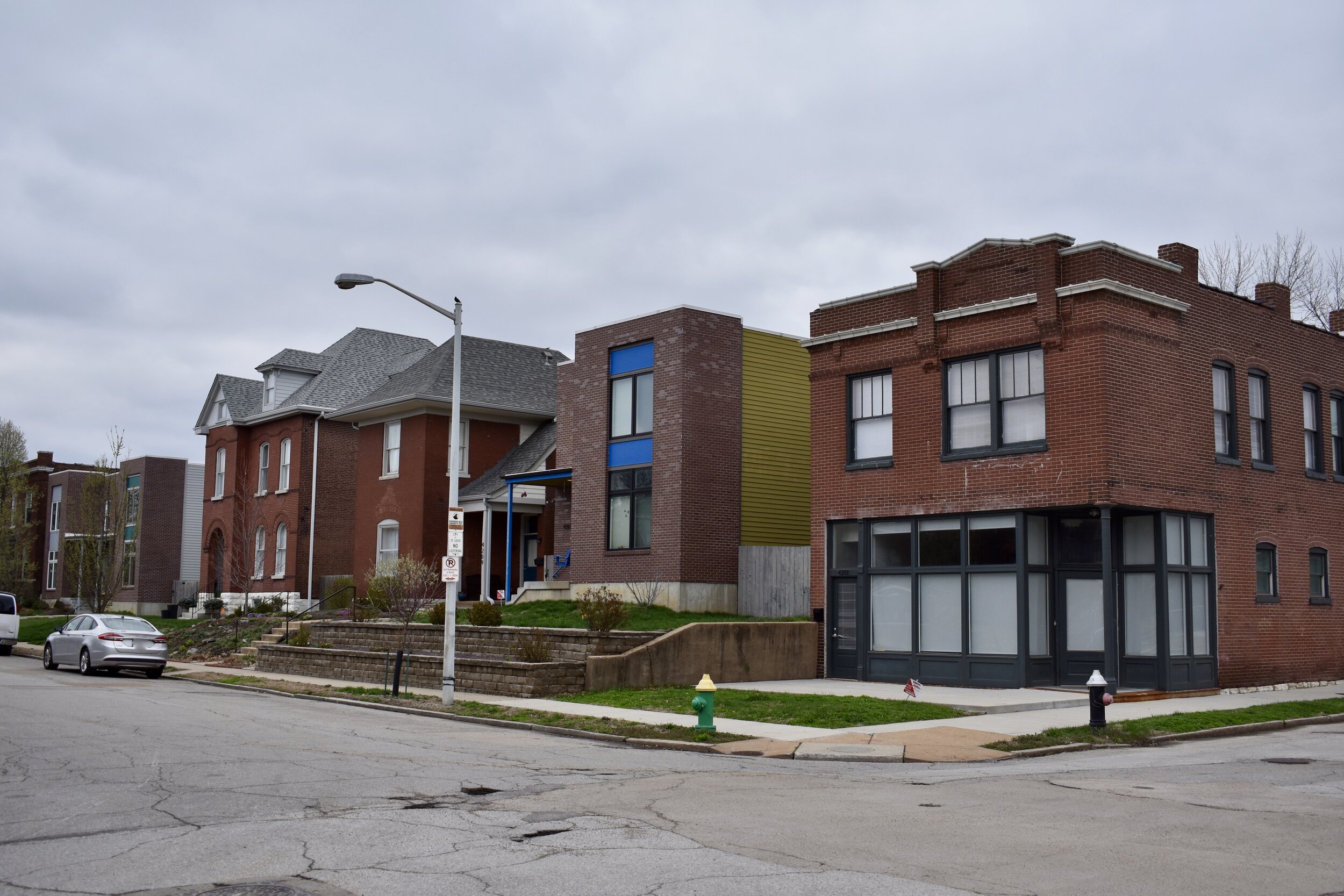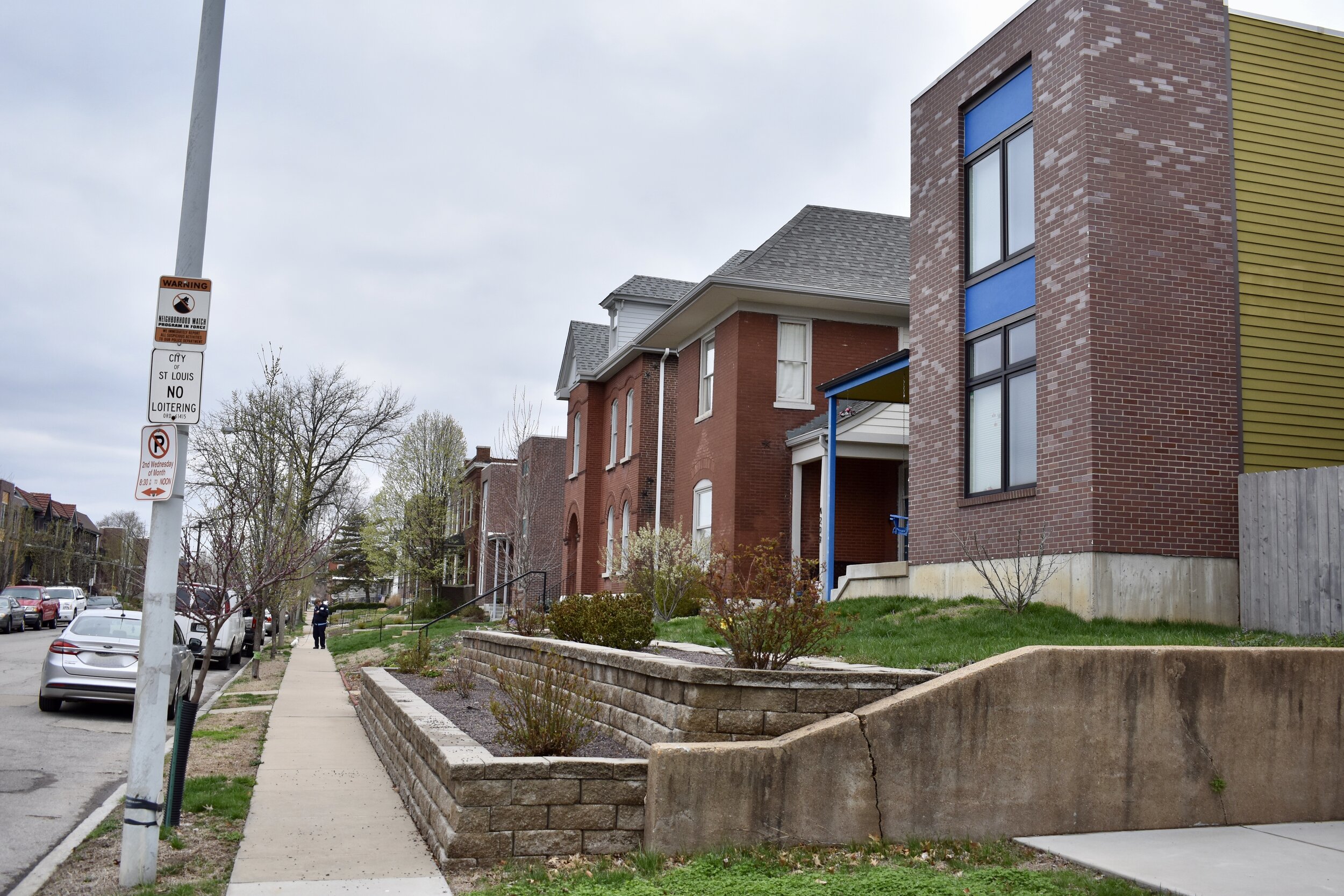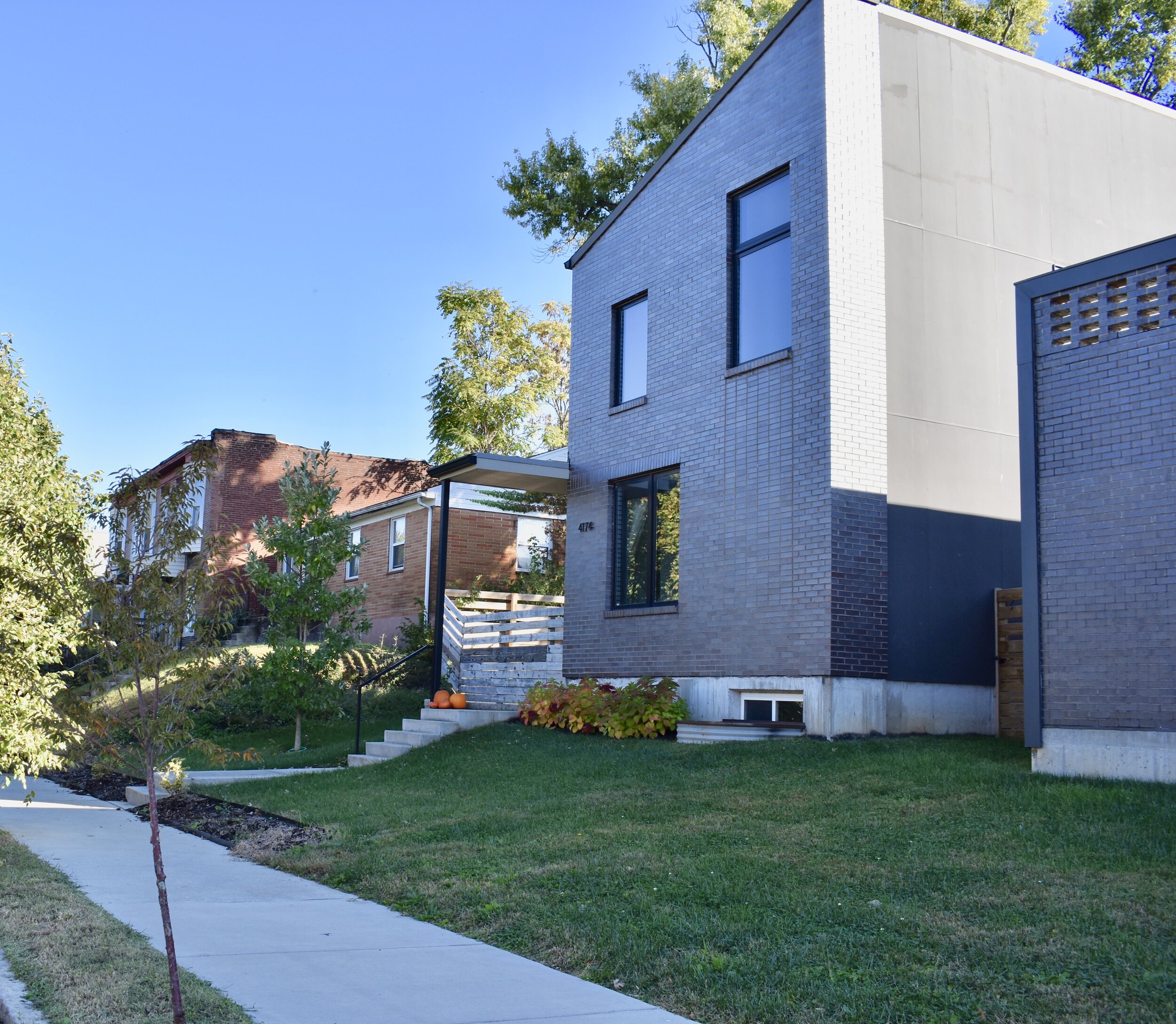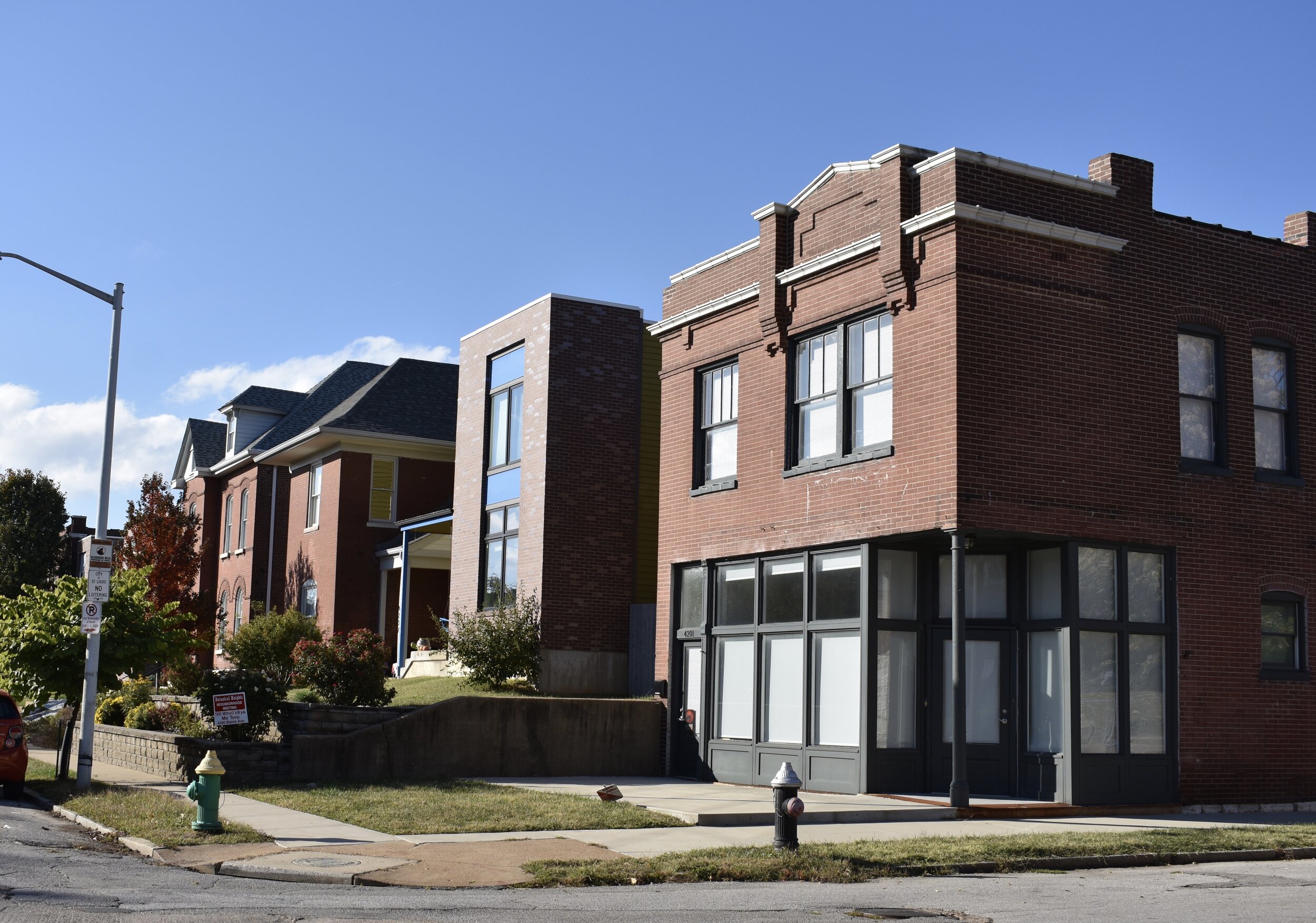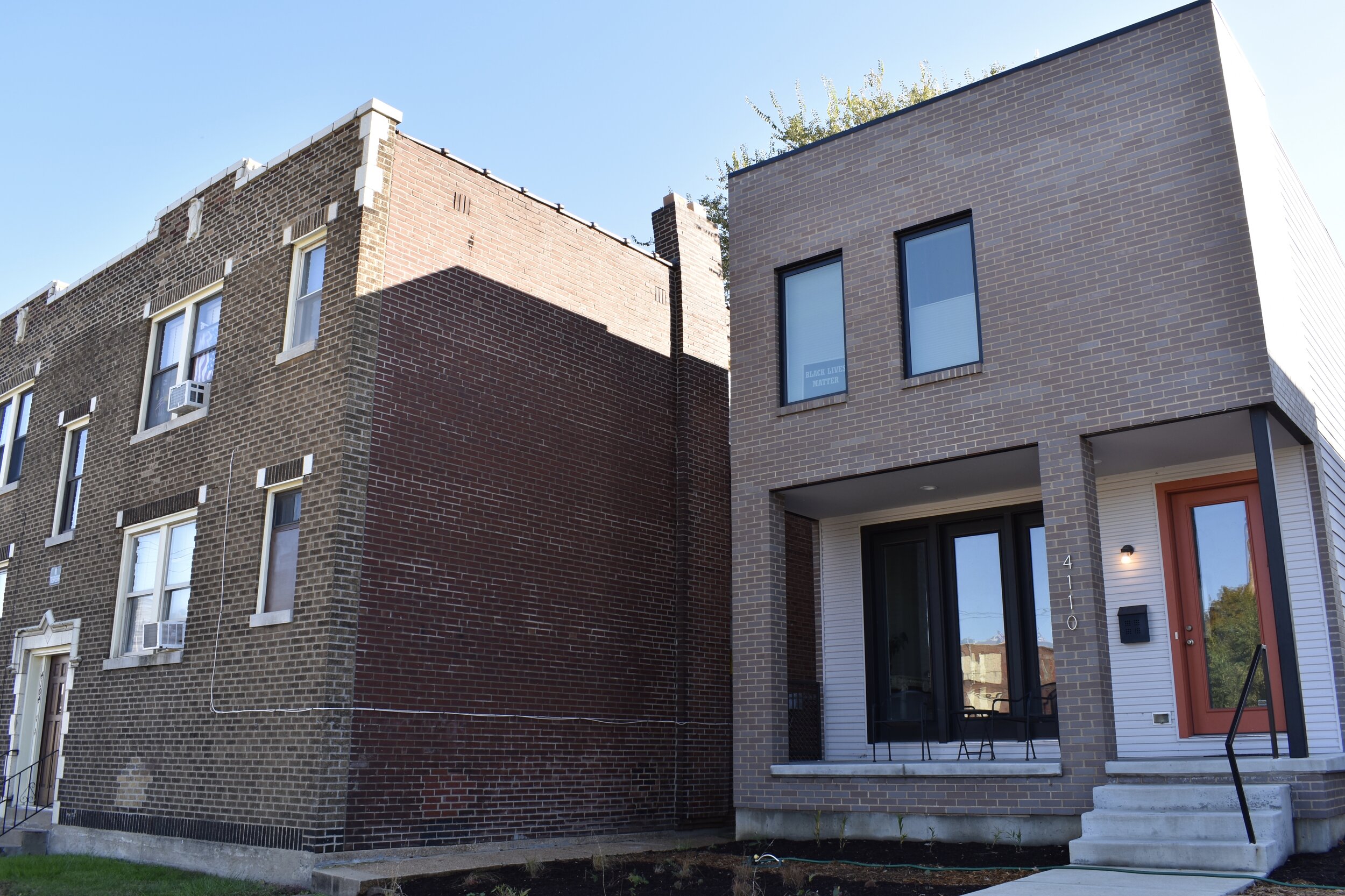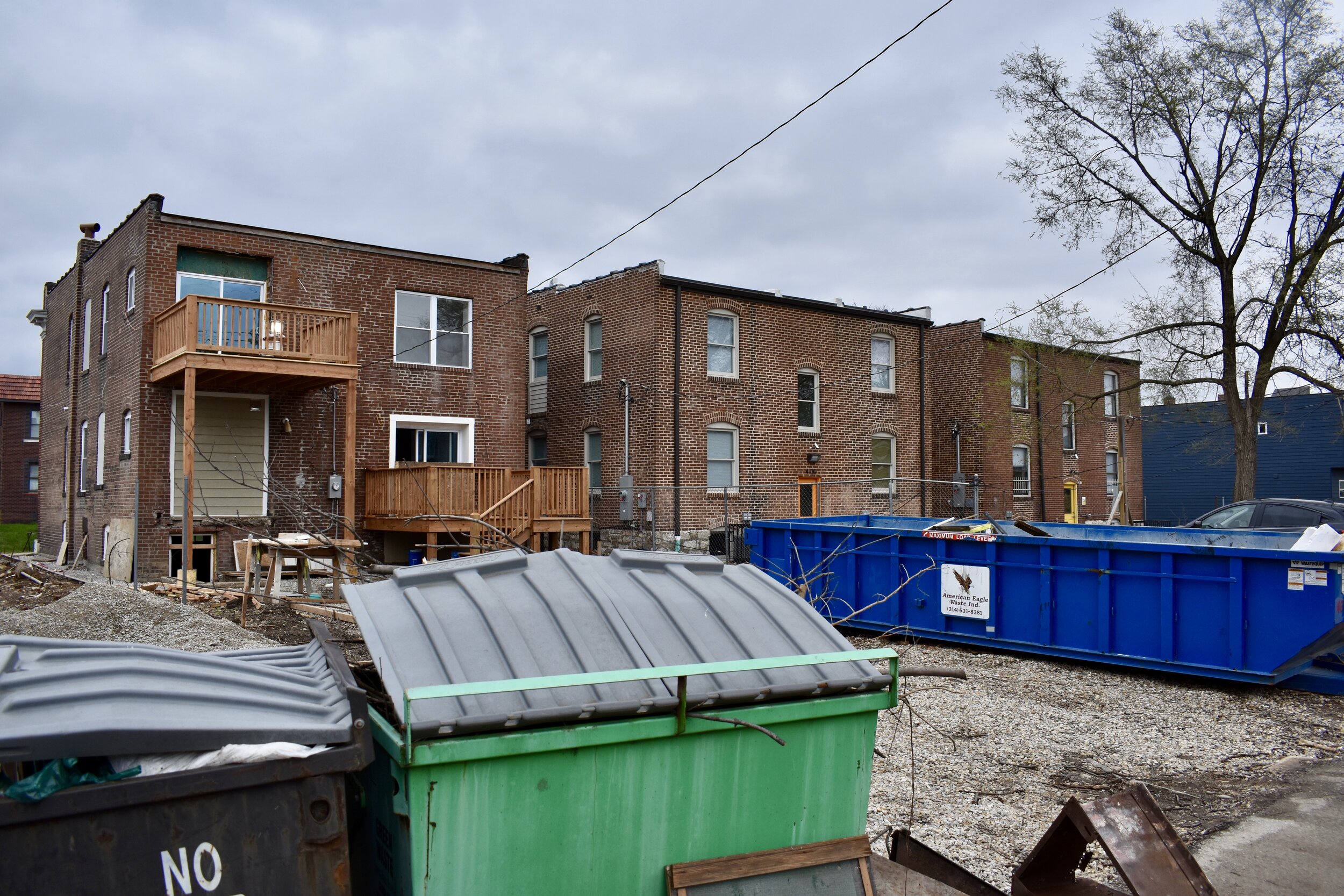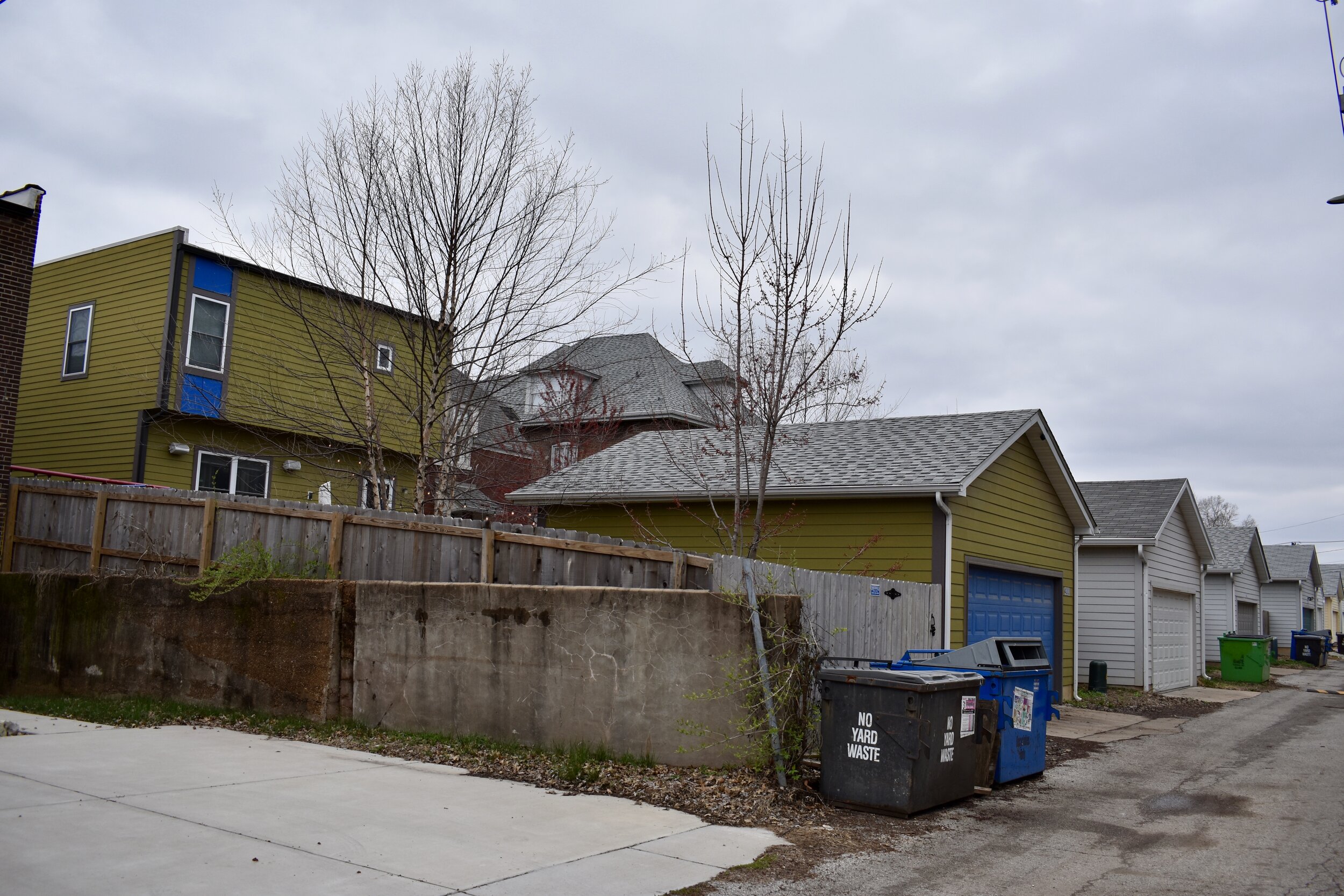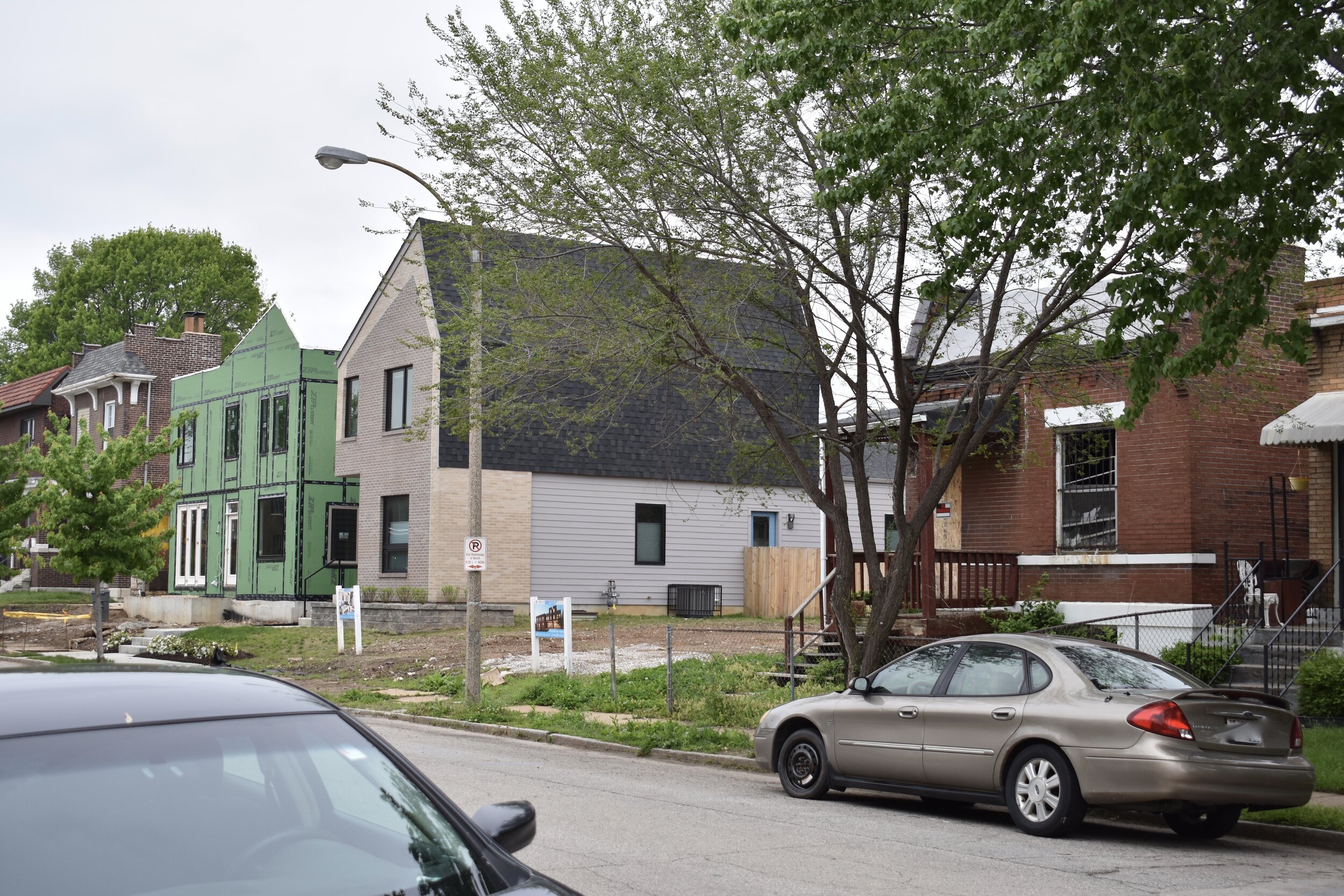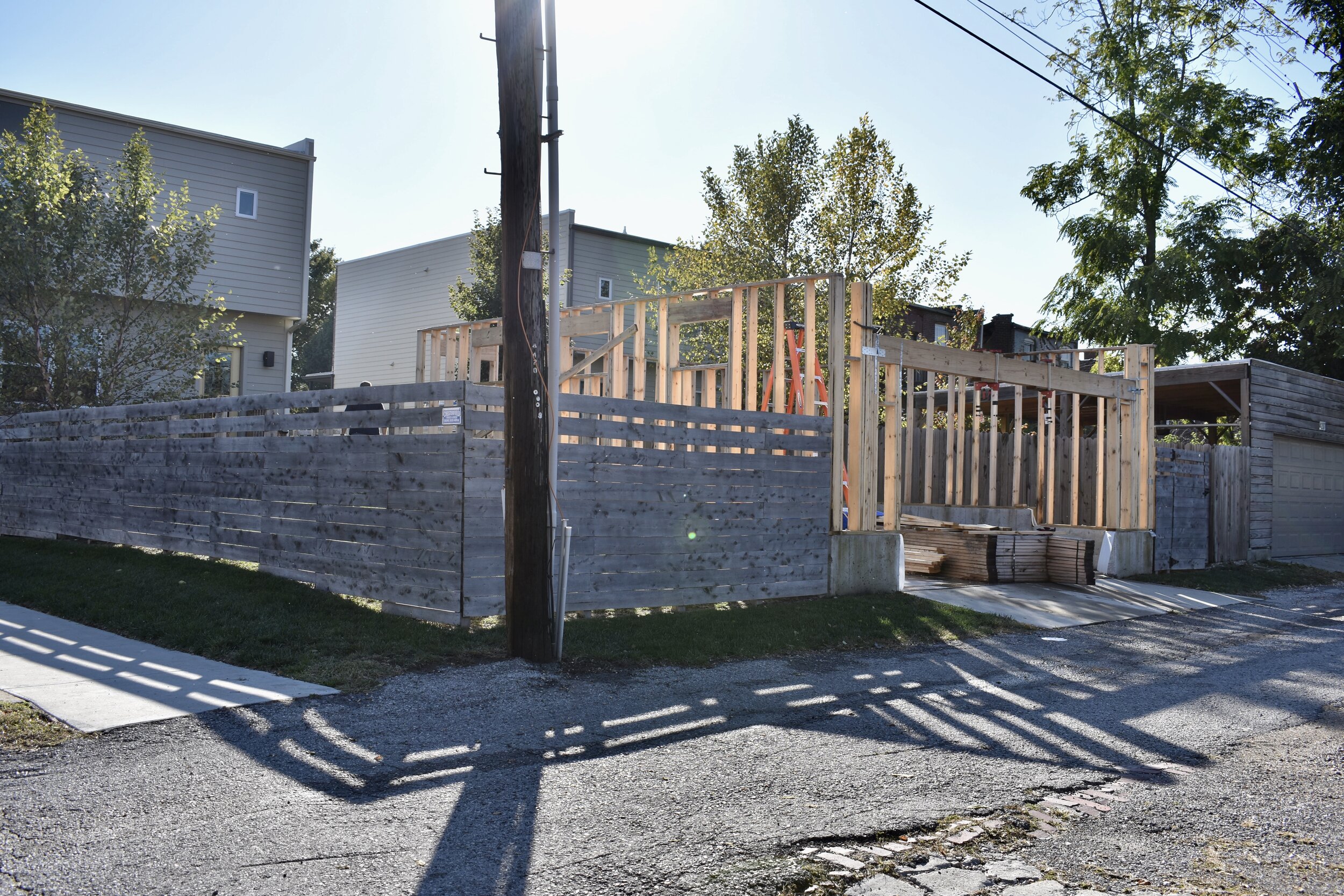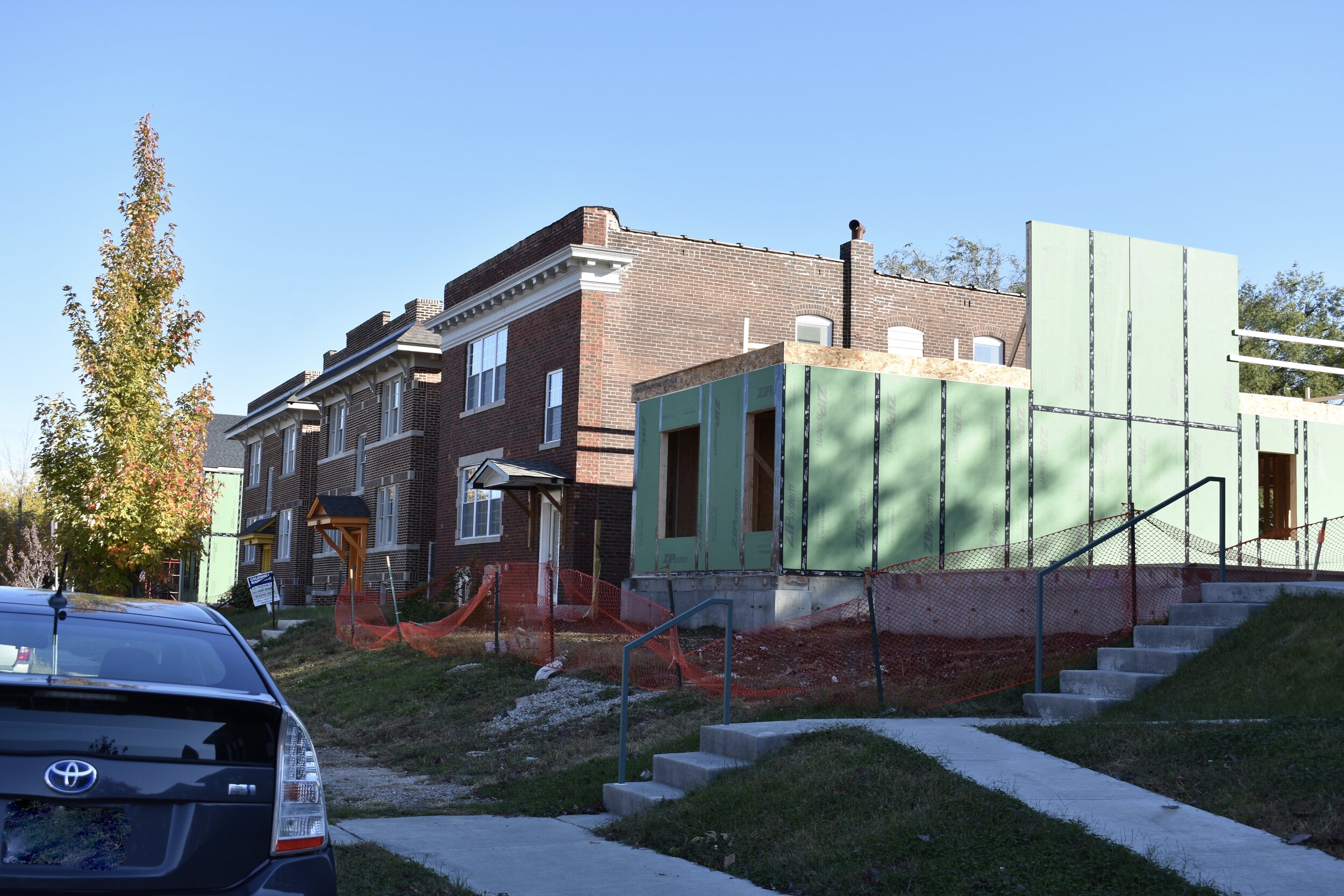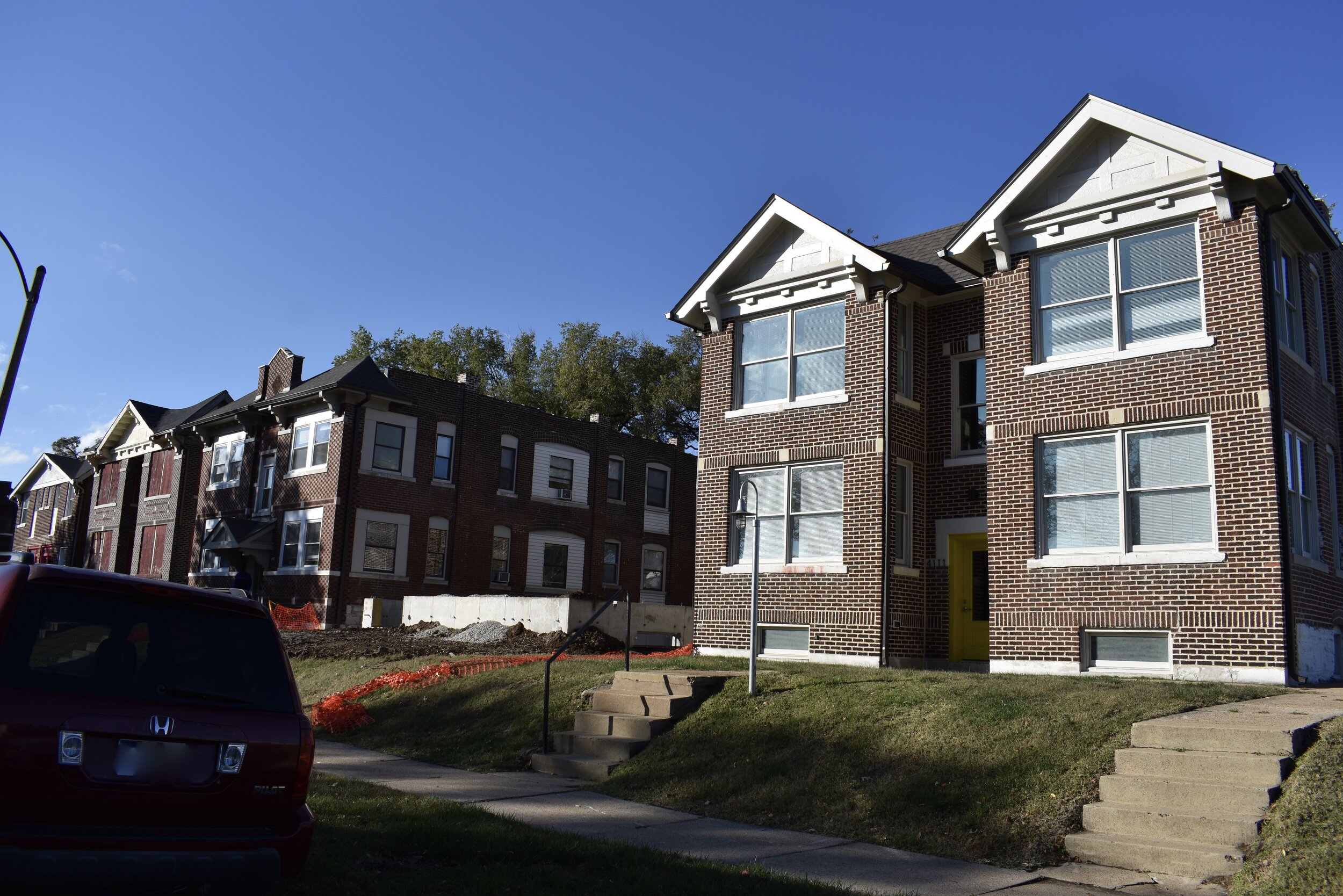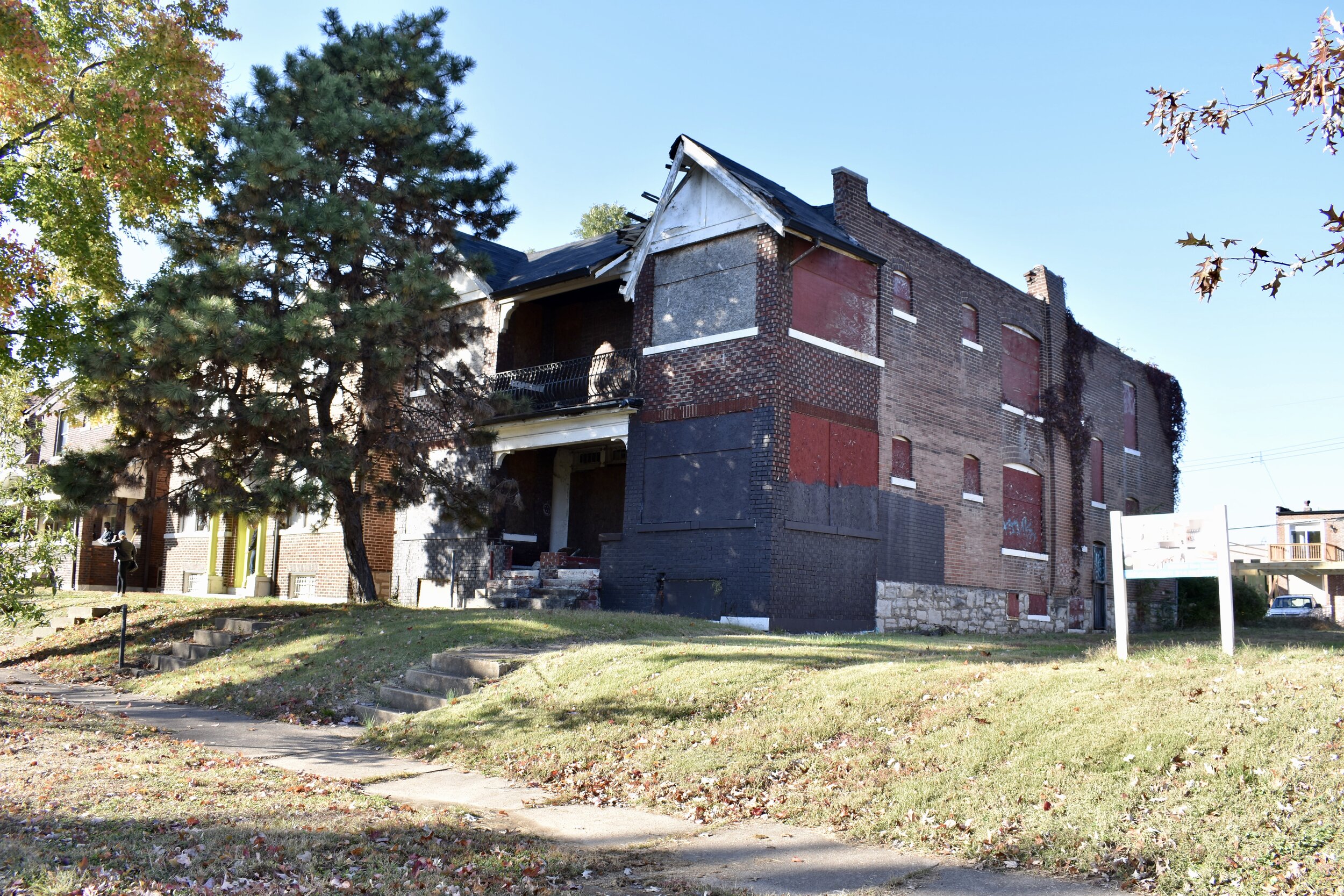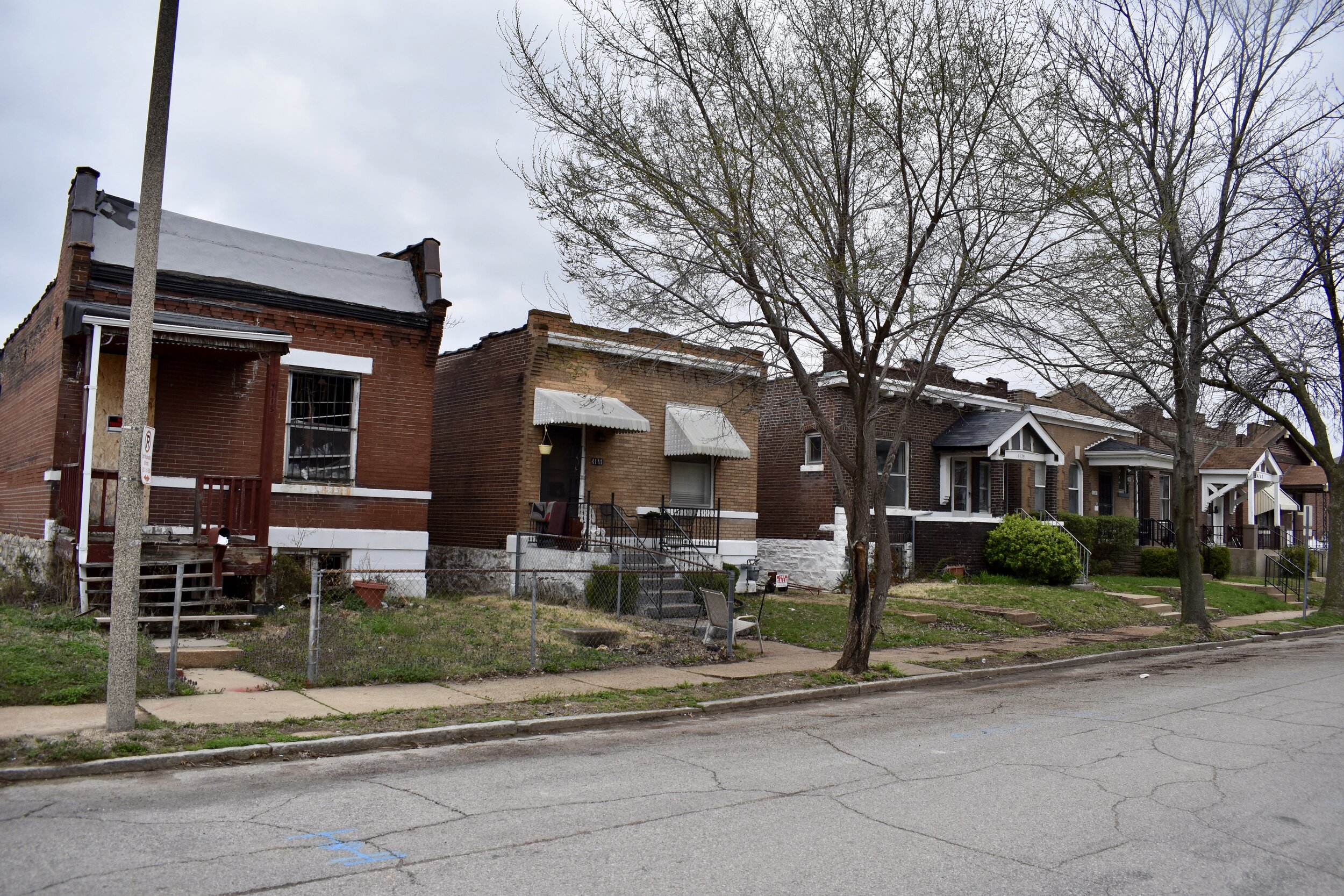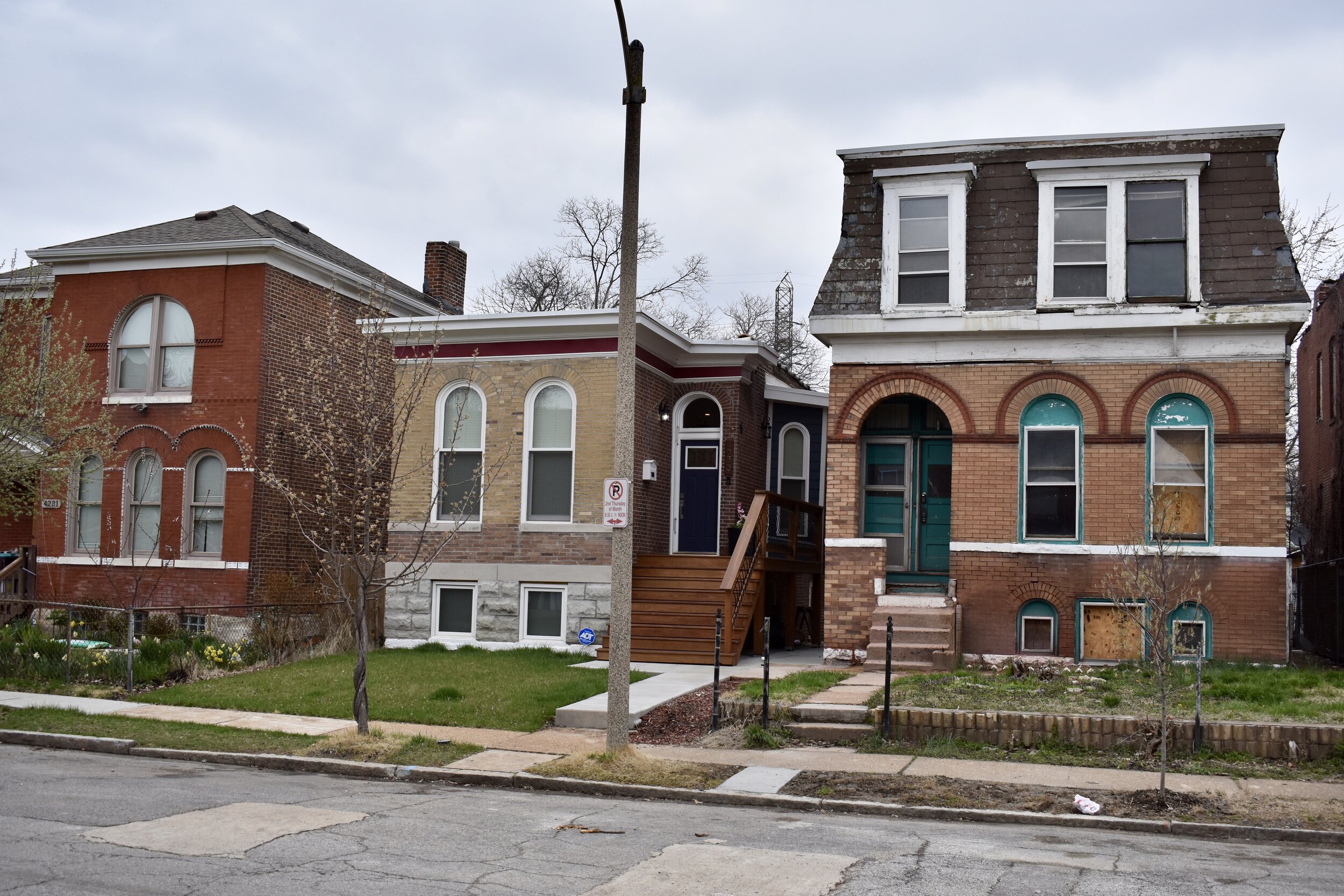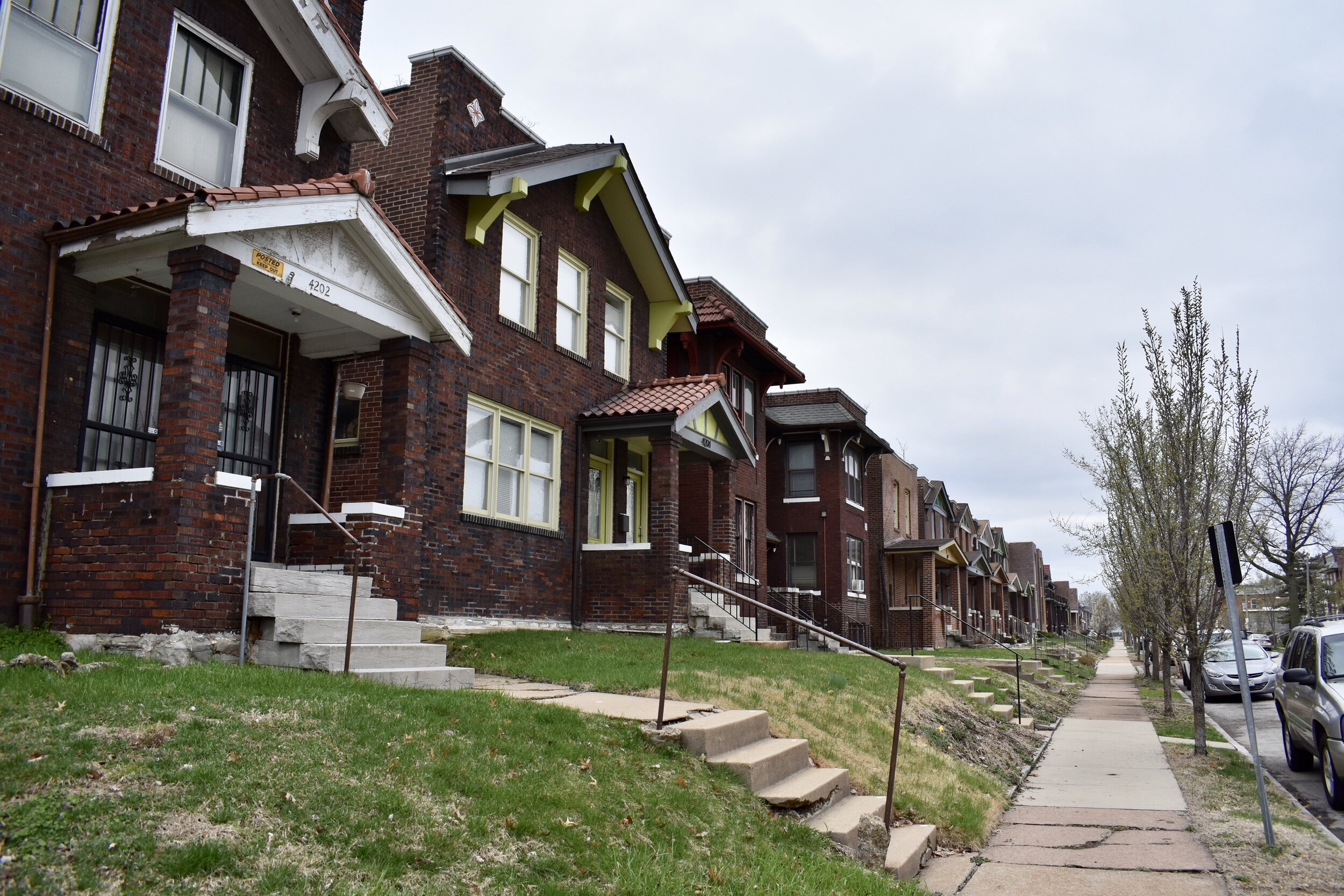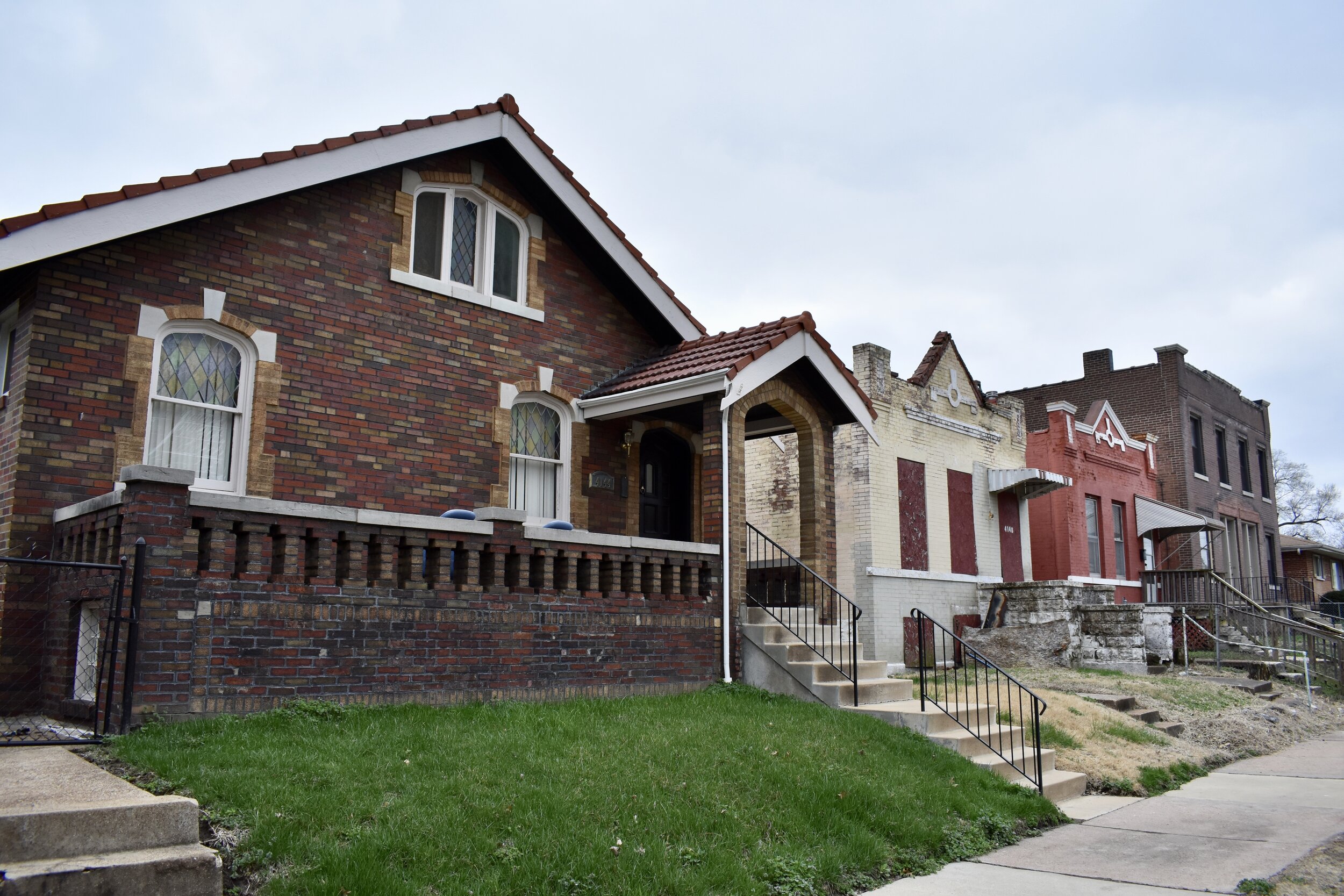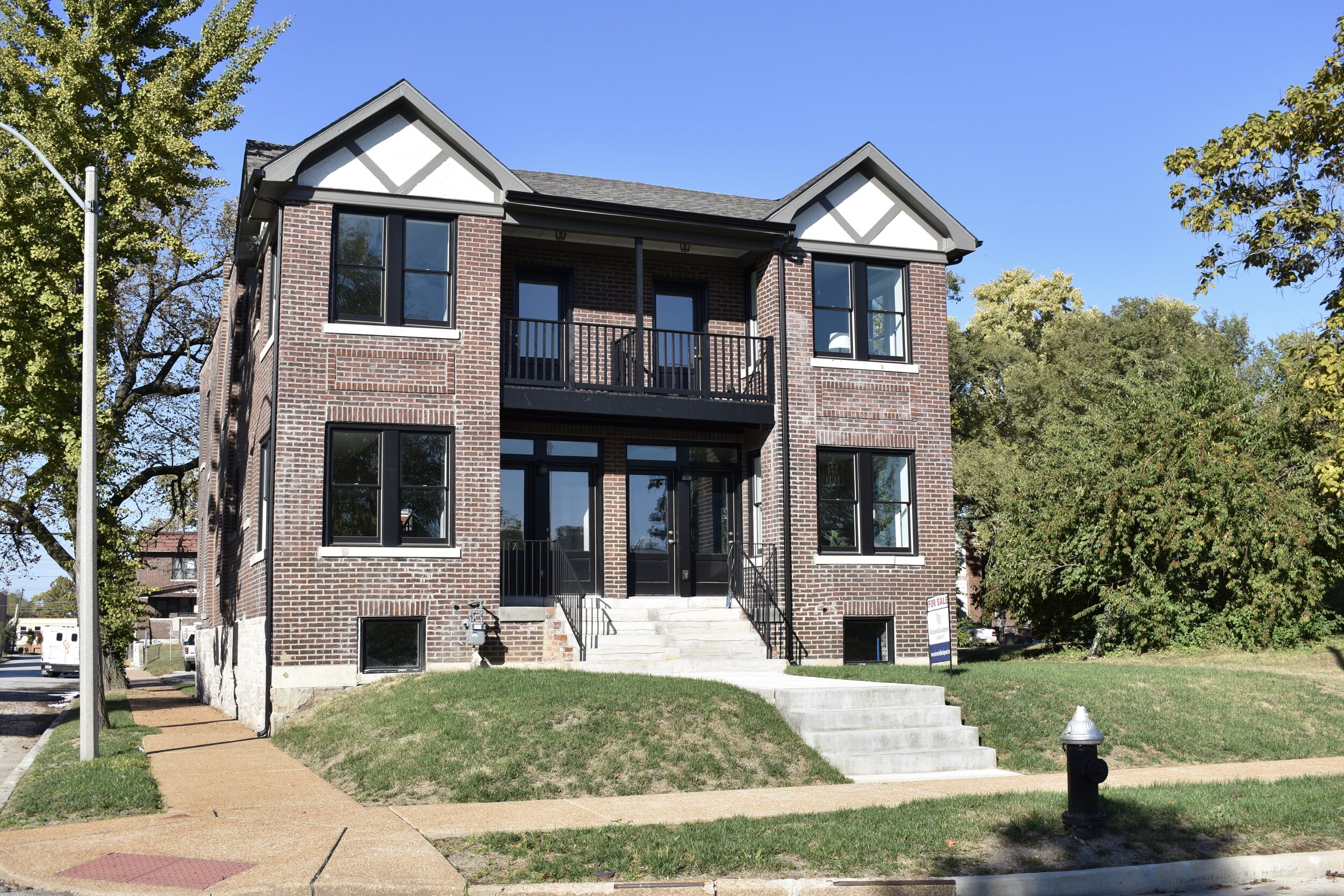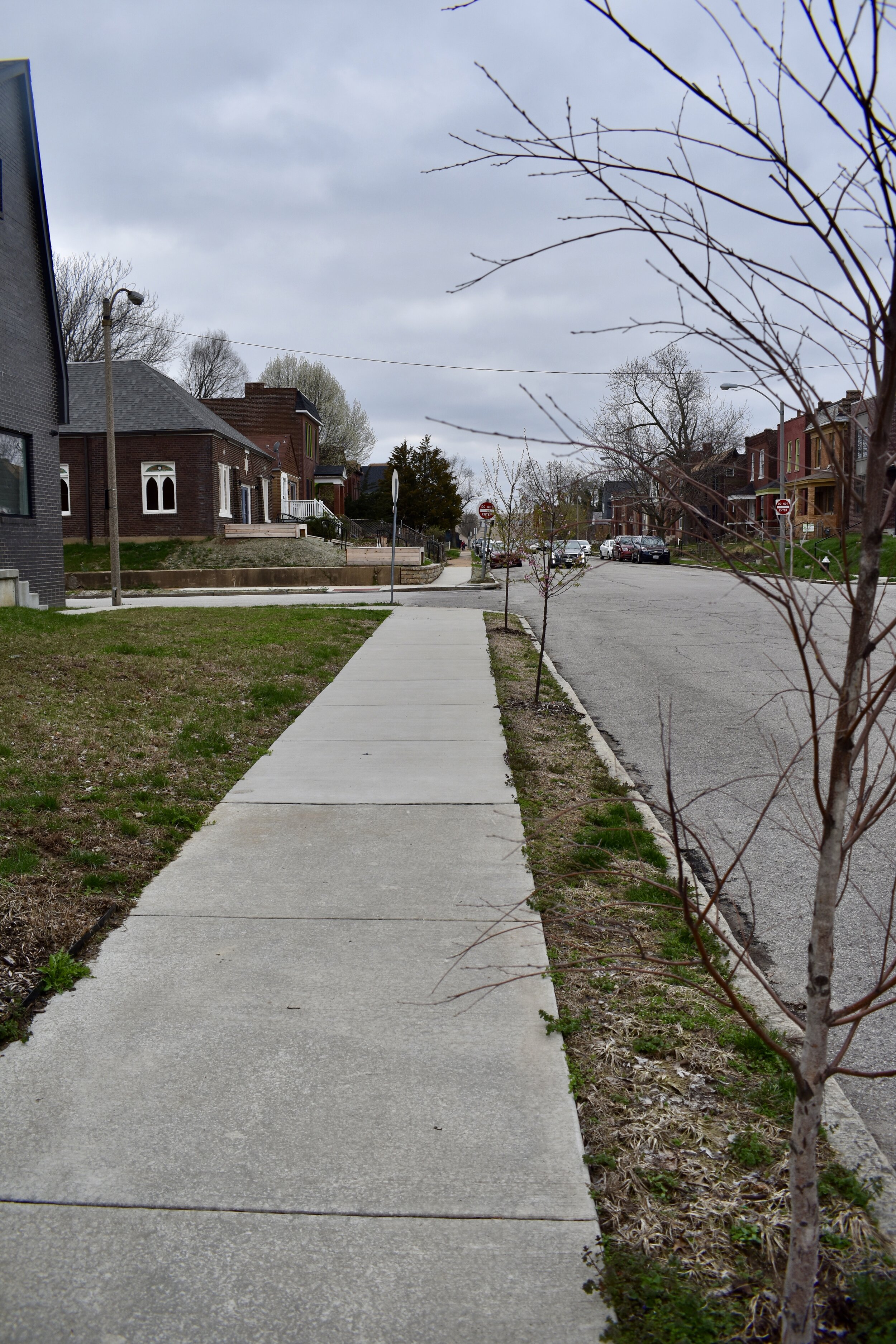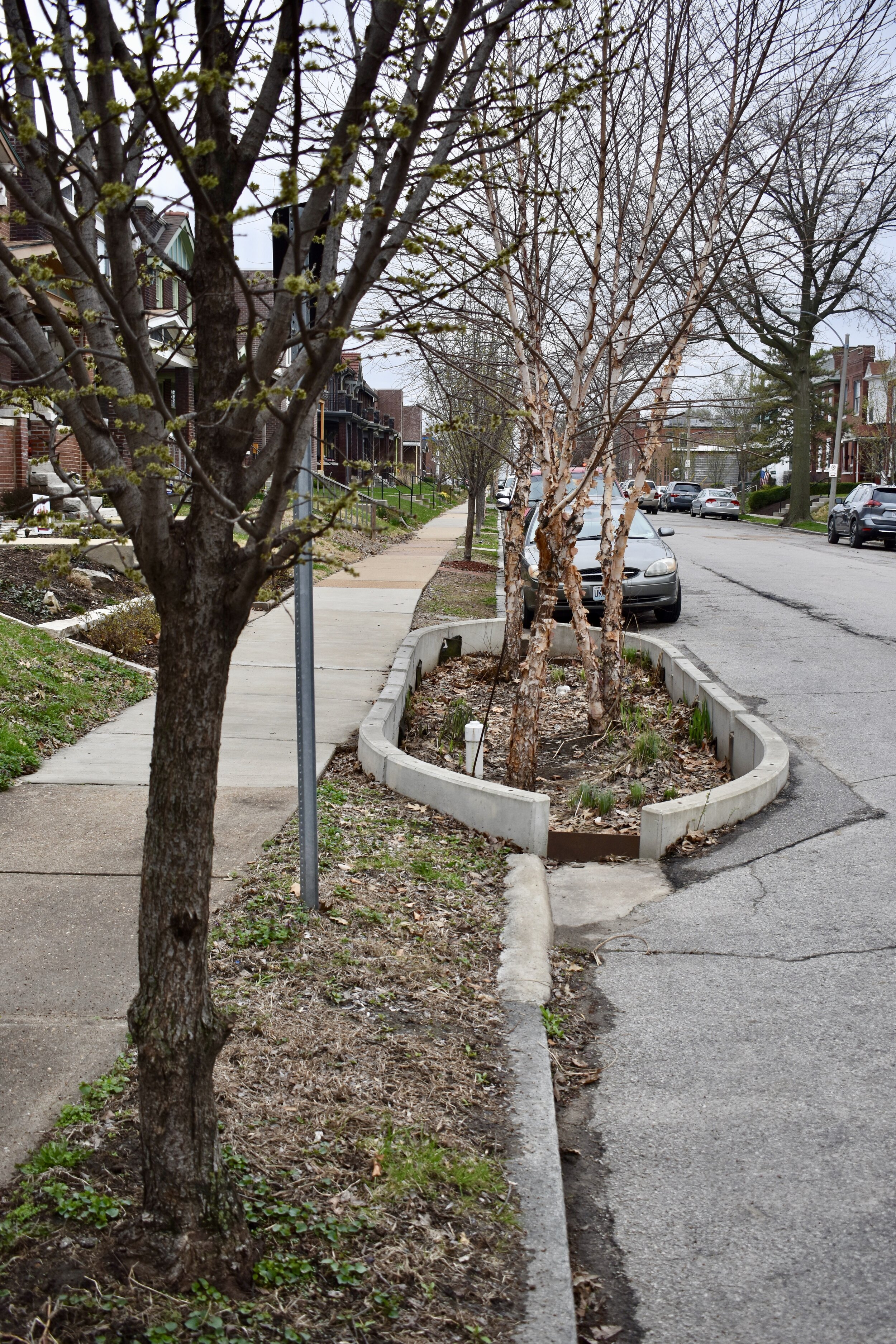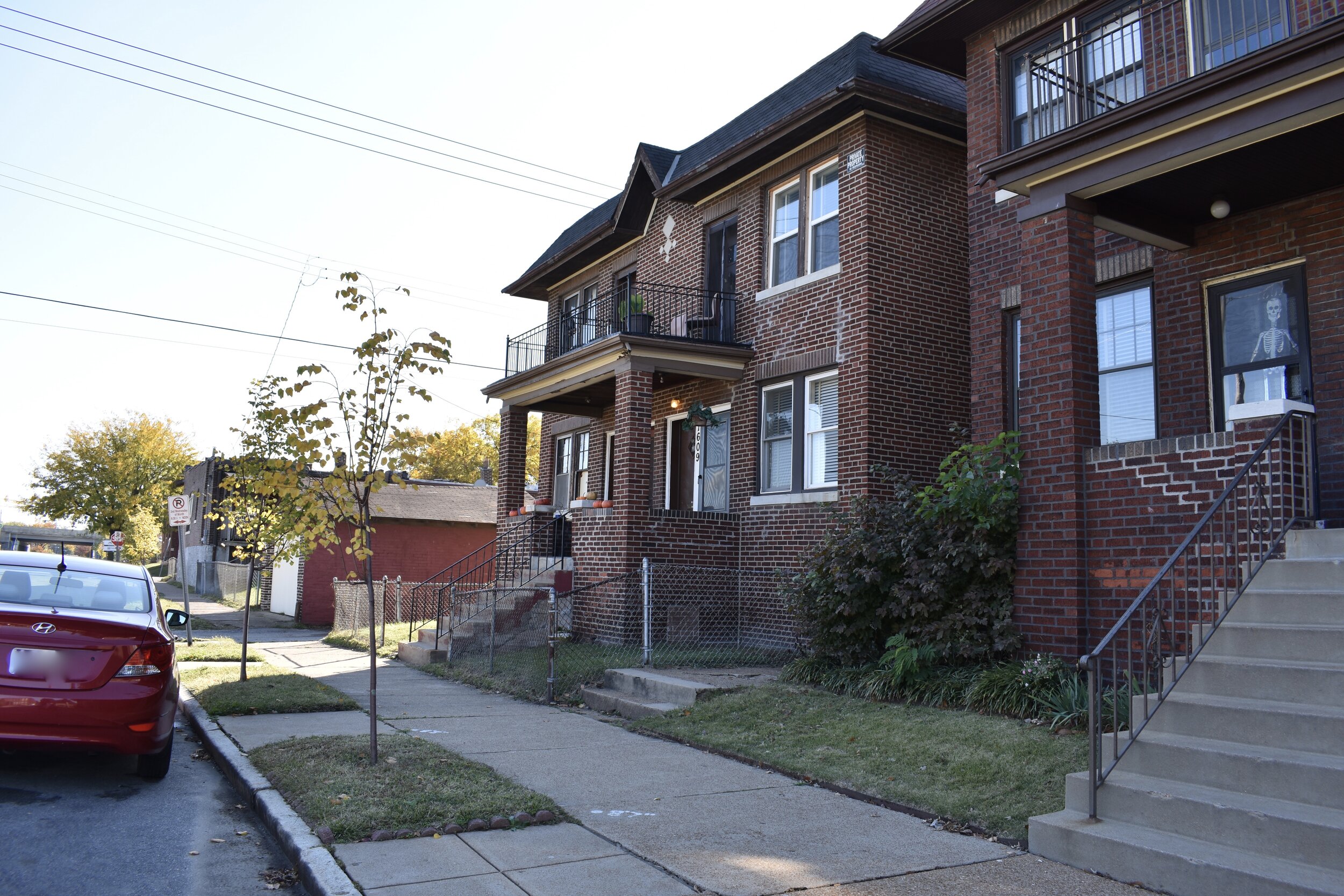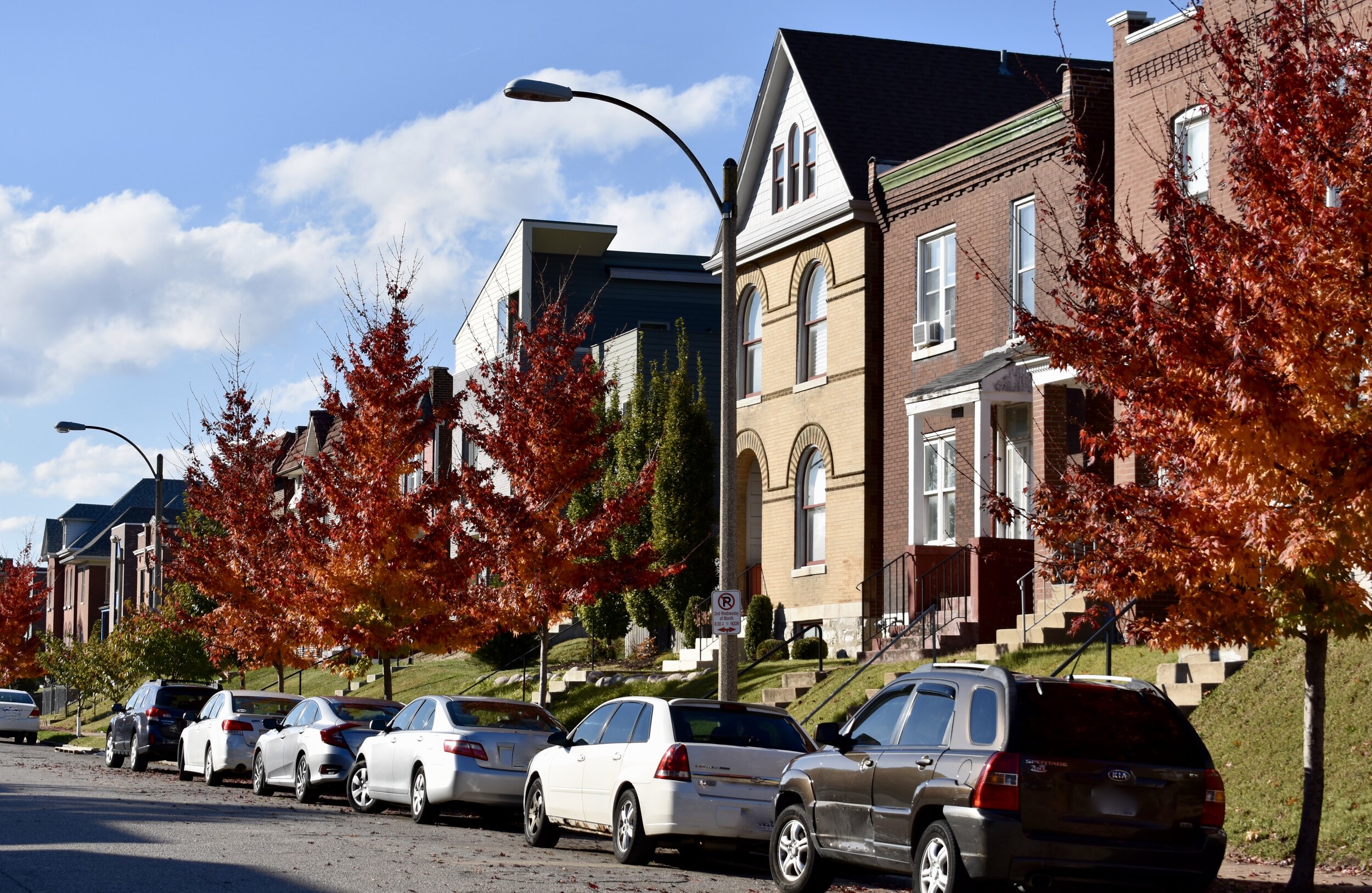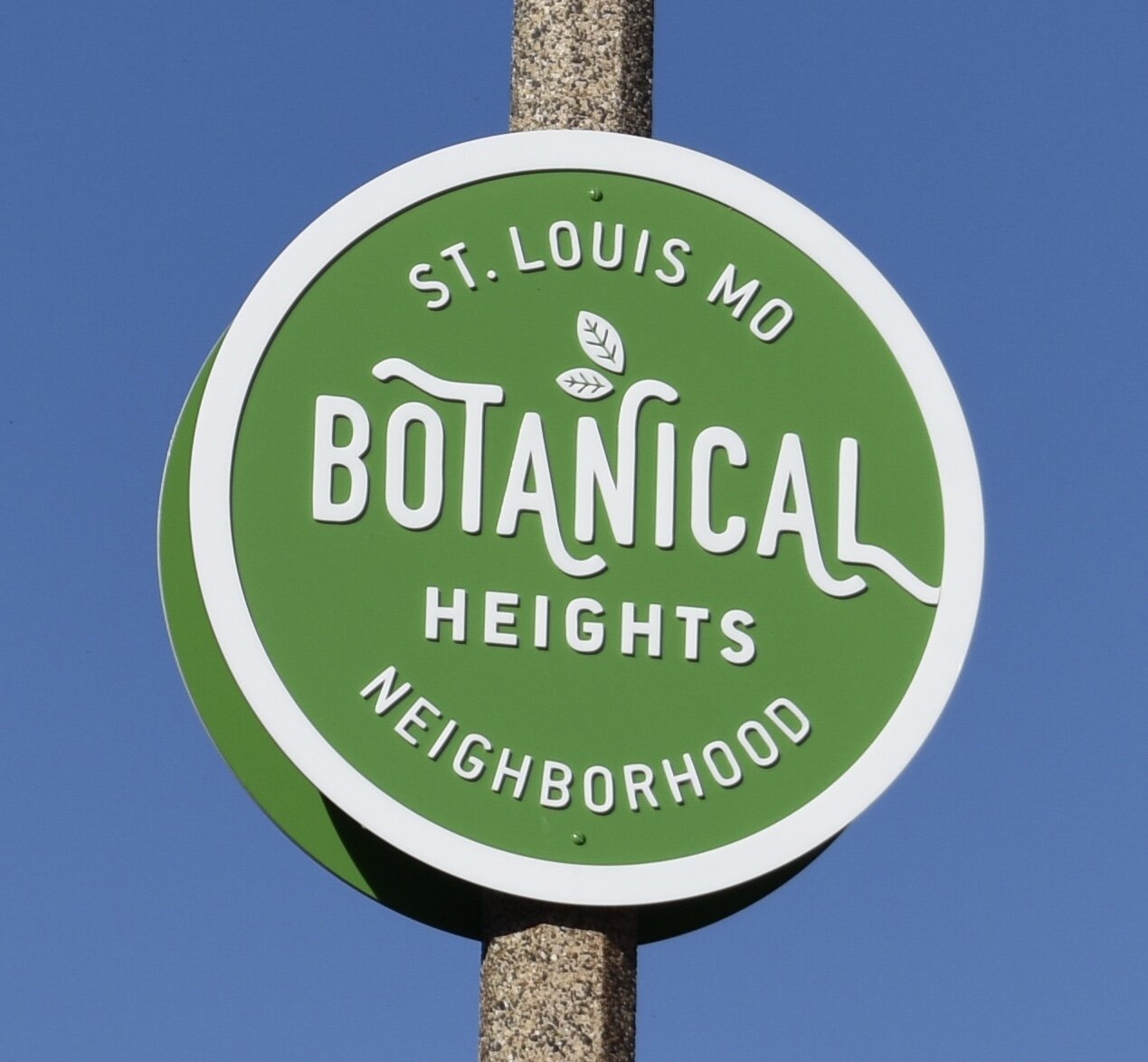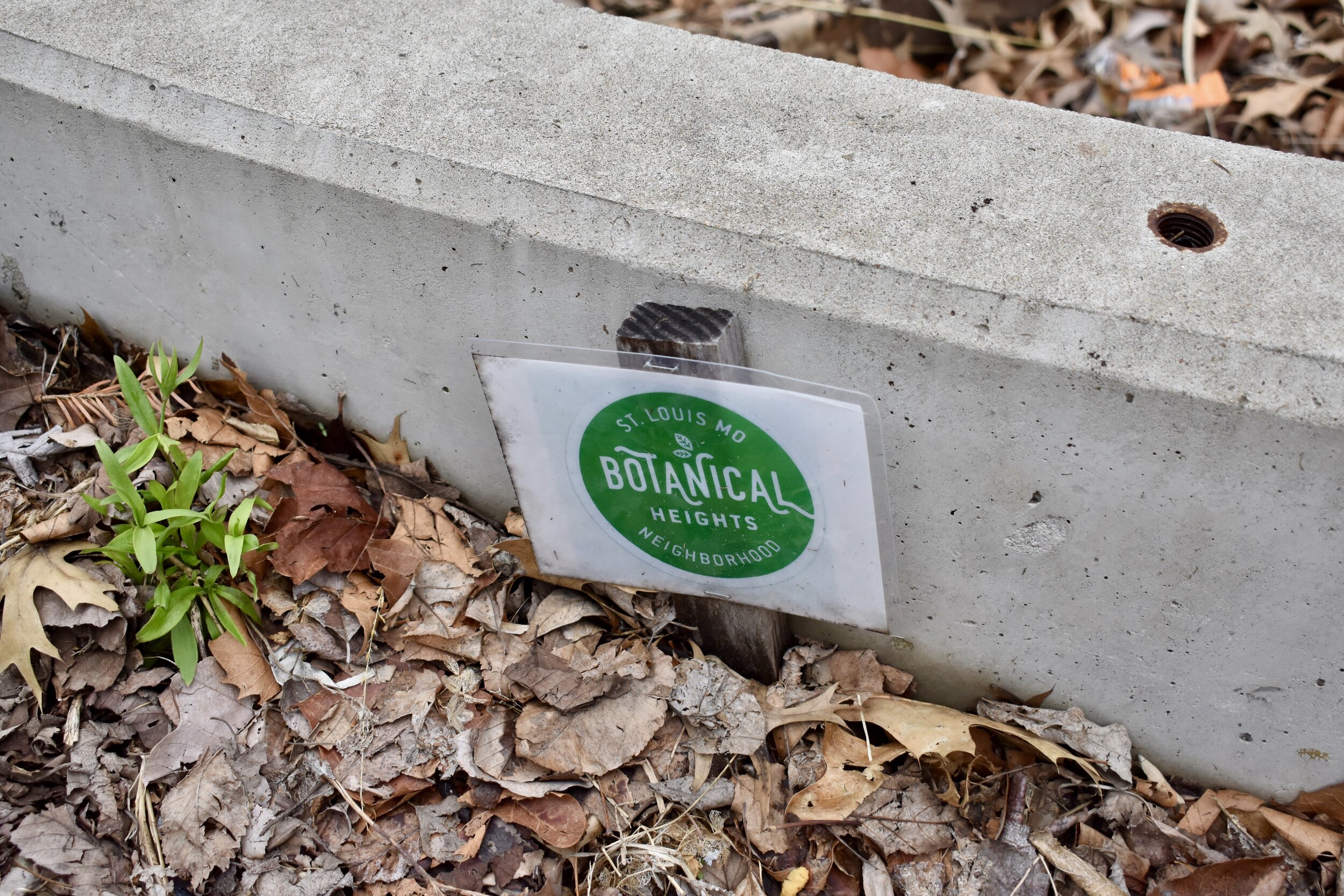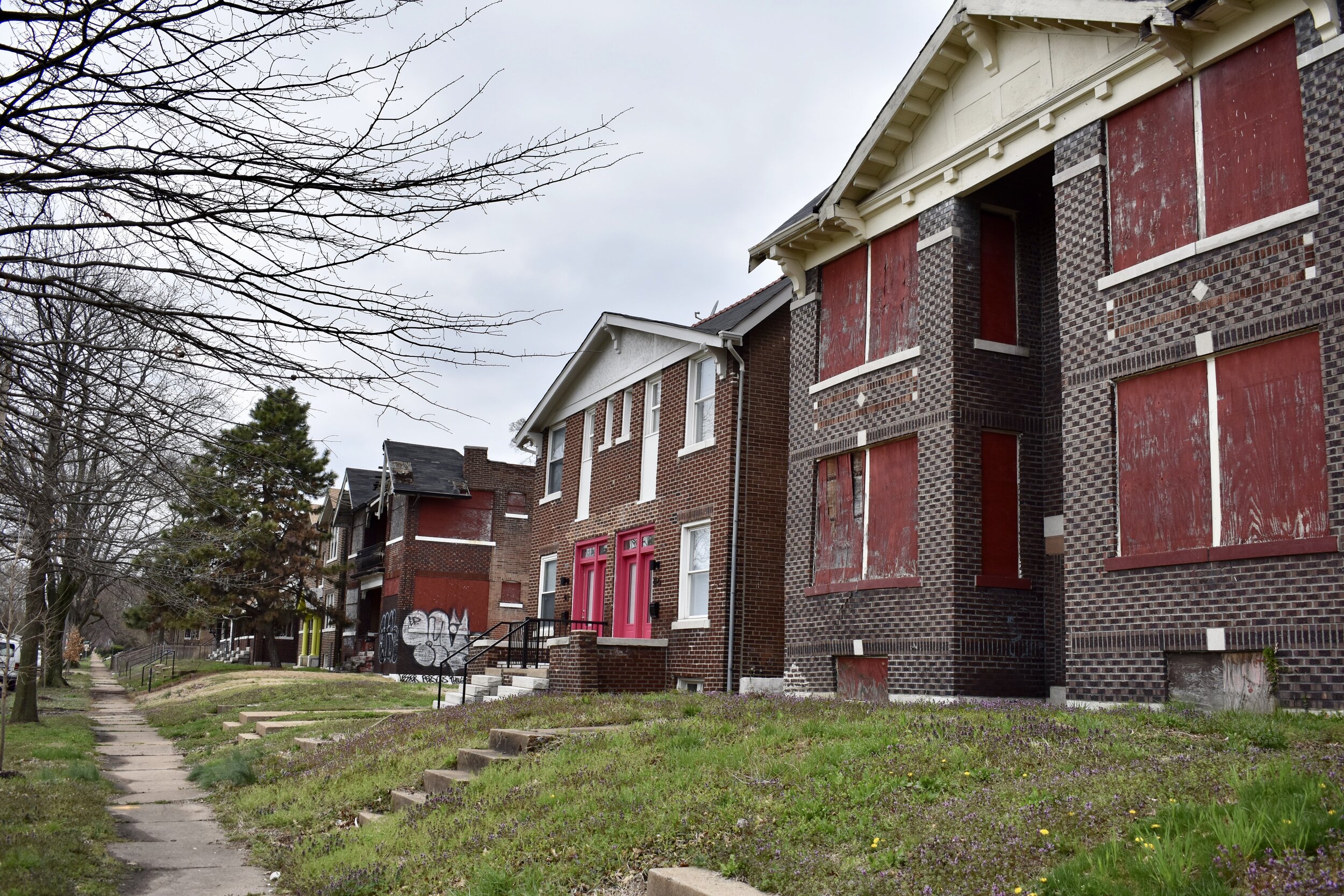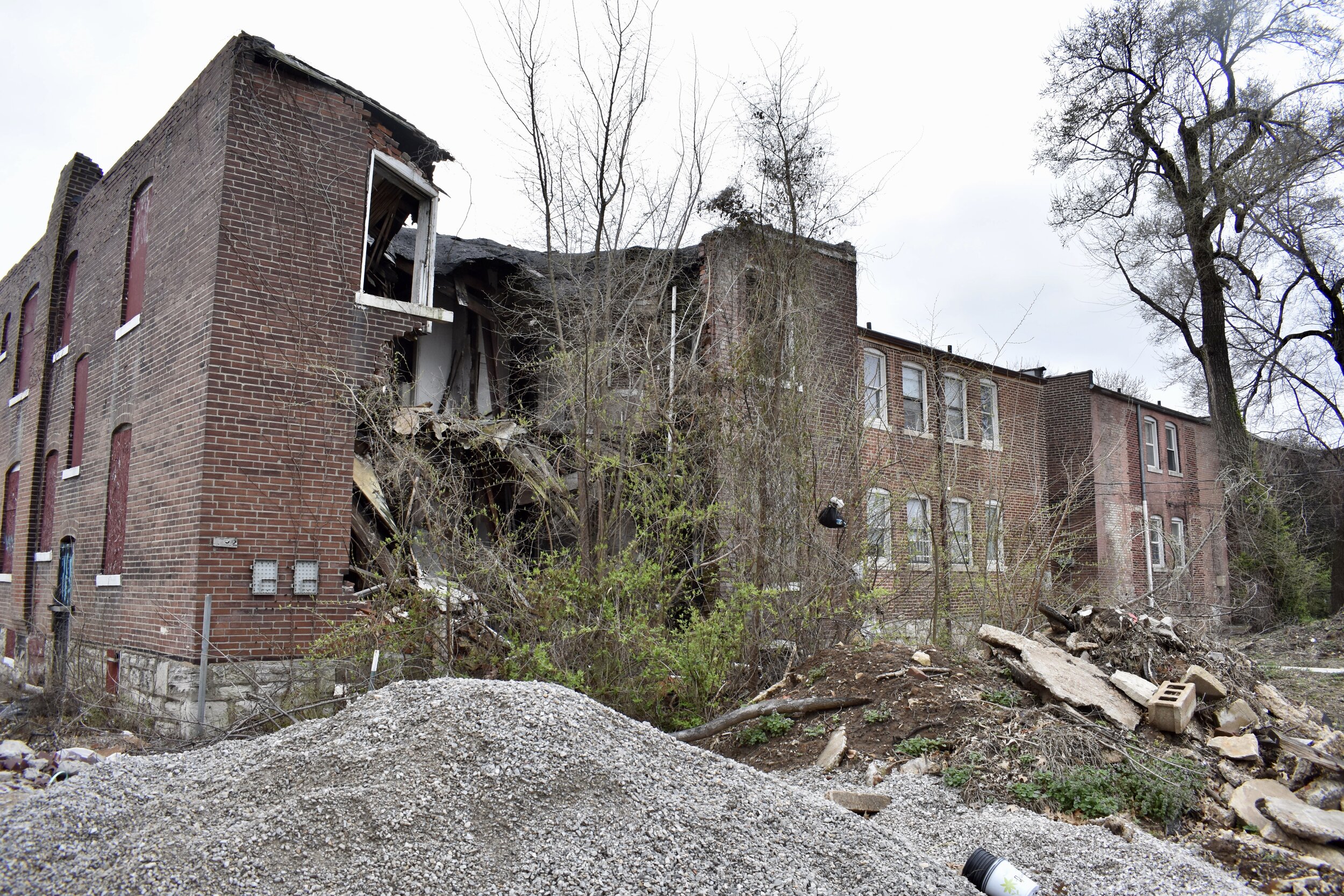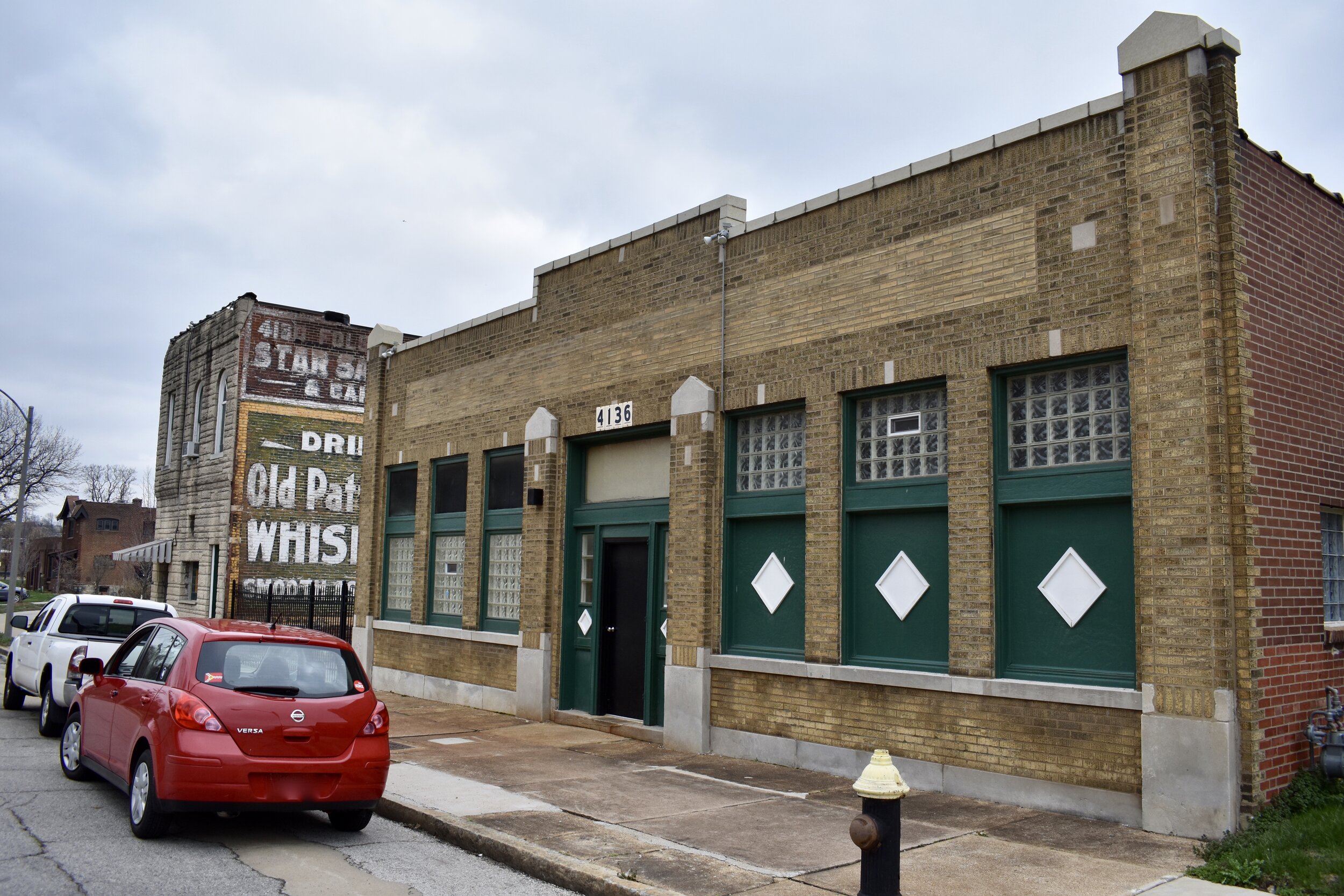In Part 2 of our examination of gentrification in St. Louis, we covered the east side of Botanical Heights (BH), from Thurman Avenue to 39th Street.
I’m no fan of the methods used nor the end product in this part of BH. Urban clearance is more like it. People were bought out and asked to find somewhere else to live.
The intentionally different approach west of Thurman was the Garden District Commission’s (GDC) attempt at infill are balanced mixed uses. They hired a well-respected local architecture and construction firm Urban Improvement Construction (UIC). An excellent choice as the chief principals live and work in BH, with their offices right on Tower Grove Avenue in the neighborhood. They are clearly invested, and the styles they have brought to the neighborhood are contemporary, modern and forward looking and they mix in quite well with the old brick beauties small and large.
This is by design as pointed out in a 2010 St. Louis Post-Dispatch article on BH.
I will even go so far as to say some of the homes are striking and might be among the best examples in St. Louis for future roadmaps on infill for any neighborhood.
The examples of infill west of Thurman and more stepwise, planned and staged. A much better example than clear cutting urban clearance. Fixing the long standing lack of maintenance, upkeep and investment was clearly a necessary step to keep the neighborhood standing and available for another generation.
And between 1970 and 1990, the investment and property upkeep from home owners plummeted. Combining the lack of investment and care by owners and residents coupled with institutional backs turned, the healthier nearby neighborhoods blocking off access and cordoning BH off from the adjacent city…something had to be done. The future was not bright.
The Garden District Commission, which we pointed out was terribly wrong with their “urban clearance” tactic east of Thurman, improved with their more organic approach west of Thurman. My use of the work organic stems from the definition being more of or related to living matter. East of Thurman, living matter (people, history) was obliterated. West of Thurman, it was a take stock and see what we can do approach. Infill, rehab and mixed uses were all considered here.
The Garden District Commission’s plan for the neighborhood west of Thurman to Vandeventer is working out. The results are impressive, but is it textbook gentrification? Is it exclusively white or high-end places meant to serve only the new residents?
Well, here in lies the perfect tale of a road map on what NOT to lean toward when seeking to rebuild, redevelop and draw business back to our beaten city and what might be a good example of rebuilding and filling in holes and rehabbing difficult multi-family buildings.
And yes, there is a lot of multi-family rental units available in BH, even though most of the new construction is single family.
The fruits of a long, long effort to make BH a dense, functioning, mixed-use, walkable neighborhood west of Thurman are in full swing after many years of planning.
The St. Louis Post-Dispatch ran a story back in 2010 announcing the kick off of the project. They claimed the east of Thurman clearance a “successful effort” while they pointed out that no one was bought out west of Thurman. Alright, we’re moving in the right direction.
“Work is about to begin on a $20 million plan to remake eight rundown blocks between a St. Louis landmark — the Missouri Botanical Garden — and the improving Forest Park Southeast neighborhood.
The project is a westward extension of the successful effort begun six years ago to replace a swath of McRee Town with more than 150 new houses. Unlike that effort — which clear-cut homes in disrepair and renamed the area Botanical Heights — the new project will emphasize a mix of rehabbed homes and construction of contemporary-design houses. No homeowners in the new Botanical Heights redevelopment area will be forced to move.”
The decline of home ownership was in a nosedive by 1990. Of course, I-44 was cited as the nail in the coffin for McRee Town being physically separated from Shaw once and for all.
Per an essential read by Hank Webber (Wash U) and Todd Swanstrom (UMSL), “Rebound Neighborhoods in Older Industrial Cities: The Story of St. Louis”, published in 2014:
“While McRee Town was always the least affluent part of Shaw, it was traditionally part of this larger and more successful neighborhood. This changed in the early 1970s when the construction of Interstate 44 physically and politically separated McRee Town from Shaw. The result of these trends was a 74% decline in owner-occupied homes in McRee Town from 1970-1990, an increase in vacancies, and a rise in housing disrepair.
In the 1990s, in the midst of the economic recession and the crack epidemic, observers felt that many neighborhoods in St. Louis were declining dangerously; conditions in McRee Town in particular had reached a crisis point. A total of 41% of the land in the neighborhood was vacant or occupied by vacant buildings, and more than 30% of all residential structures were vacant. More than 56% of structures in the neighborhood were dilapidated or in nearly unlivable conditions. Property values declined 34% from 1990 to 2000. In a 19-month period in 1993 and 1994 there were eight murders and 20 shootings in an area of less than a square mile.” - Webber and Swanstrom, 2014
By 2002, the McRee Town community development plan from the GDC had been created with local residents input. It was adopted by the City of St. Louis. And UIC was hired to develop this section of the neighborhood.
“Phase 2 which included 31 new or rehabilitated homes. The homes would be LEED certified and in a contemporary style that complimented the scale of existing housing stock. Construction of Phase 2 began in 2011, and so far UIC has sold 25 houses at an average of $295,000 per house ($330,000 for new homes). One particular marker of success has been the diversity of tenants in these new homes; 35% of buyers are families, 20% are young singles, 25% are young couples, and 20% are empty nesters.” - Webber and Swanstrom, 2014
The part of town discussed in this post is highlighted in red:
Walk around Botanical Heights today and the investment on display is overwhelming. It looks great, with infill and rehabs. You can see properties that have been built or rehabbed by UIC, the local firm with offices on Tower Grove Avenue. Brightly colored doors mark the properties providing some artful interest to the red brick that we’ve been blessed with.
Diversity of housing is clearly apparent. The new UIC homes mixed in with the multi-unit buildings is a perfect fit.
Side by side the new and old buildings complement each other. This is good infill, folks.
Construction dumpsters are all over the place with signs of new construction, rehabs and alley improvements including garages is all over BH.
In some cities, the modern infill is so dominant that it absorbs all the former character of the neighborhood. I’ll use a recent trip to Denver as an example. But not here, the infill is not overwhelming the brick city. There are still many stretches of the original, smaller brick homes and multi-families to provide continuity and remind you that you are in St. Louis.
Infrastructure investment is benefiting the neighborhood as well, with new sidewalks being poured, hundreds of street trees planted and rain swales installed to mitigate storm water runoff.
The neighborhood association is active with branding and involvement, they have one of the best community gardens in the region.
Investment here is still not without risk as many of the structures are in serious disrepair. Some of the views from I-44 are still rough, but improvement is underway with infill and rehabs taking place on Lafayette Avenue, just north of the Interstate.
So, it is hard not to like what is going on in this western section of BH. UIC’s modern, environmentally sustainable construction is impressive, a breath of fresh air from the faux historic that brings mixed results in many of our older neighborhoods.
I knew I would have to talk to UIC if I was going to have a fair shake at understanding this brand of urban development. Brent Crittenden, one of the founders of UIC, was kind enough to speak with me over the phone and email to provide some perspective from the developers working with the GDC here.
First, some information from UIC’s website:
“Botanical Heights has been our home turf since 2006, when we moved our office into a former pharmacy that was about to fall over before we bought and rehabilitated it.
Botanical Heights is a new name that replaced McRee Town, which at one point was one of the most dangerous urban neighborhoods in the nation. At the time we moved in, the eastern half of the neighborhood had recently been completely torn down and replaced with new housing by a large regional home builder. The western half was assumed to be slated for the same fate; we had a different idea!
Working with a not for profit redevelopment group, the Garden District Commission, which was formed by the nearby Missouri Botanical Garden, we forged a new plan that stabilized the existing building stock and move forward with an ambitious plan for historic rehabilitation and infill building that would re-create a walkable, sustainable, mixed use neighborhood.
To date, UIC has developed, designed and built over 40 new homes, dozens of apartments, a facility for the state’s top performing charter school, several nationally recognized restaurants and various office and retail spaces. UIC has guided over $15 million in investments in the neighborhood thus far with another $10 million slated for the coming two years.
The neighborhood has received local and national praise for both the speed and quality of the redevelopment. By working within the context of this long neglected 100 year old neighborhood we have been able to foster a rebirth with the density, amenities, and charm that make city neighborhoods great places to live and work.”
After our conversation and email exchange, I learned that when walking around BH, you will notice the whimsical, bright colors of some of the front doors. Brent confirmed that is the work of UIC. The building numbers now total ~50 new build to suit homes and 16 renovations of 2 and 4 family structures. There are an additional 10 under construction and ~40K sq. ft. of retail/commercial/institutional space.
There have only been 3 demos so far. The rental:owner mix is stable, right now around 50:50, with 60 apartment units recently available. 15% are deemed affordable housing.
We talked about thoughts on gentrification. Pushing people out via price or all high end offerings only made available to rich white people. While it is undeniable that black population has dropped from 74% to more like 47% now; and a whopping 170% increase of whites and even bigger for Asians. The neighborhood is way more balanced and mixed-race now. For some that is enough to call this gentrification and say the results are negative (my words, not Brent’s).
I asked Brent about his thoughts on displacement of established residents. He spoke to their first project in the 4200 block of McRee Avenue. There were only 4 occupied buildings on that block. The vast majority of the people were already long gone. There were still some longtime residents, mostly fixed income retirees. 13 historic renovations in this area has helped breath life into these formerly desolate blocks, raising the property values for those who chose to remain. Stability has come for the longtime residents, and many have chosen to stay and get involved in the neighborhood.
I asked him about he high-end businesses currently in storefronts along Tower Grove Avenue.
They are proud of these renovations, including the formerly abandoned gas station that is now Olio. La Pâtisserie Chouquette was a shuttered hardware store. Hoffman Brothers HVAC moved out, freeing up space for storefronts. Other buildings were former industrial uses, long since closed.
The street is now active, and has several restaurants that draw people from all over the region. High cuisine, quality, expensive food, yes. Exclusively white, not so much. Anyone is welcome here.
I asked Brent what St. Louis needs to help all these old neighborhoods that have received little to no investment from both the residents and the city, state, private sector, etc? He spoke to the need for better planning at a high level to preserve affordable housing. Again, BH is around 15% affordable housing. Much of the affordable units have deplorable living conditions in other neighborhoods. The owners are not interested in tenant dignity or quality of life. BH benefits from the quality, stable affordable units offered here.
In his opinion, most of all, we need more people who want to live here.
I asked him if the bad planning or lack of planning of any kind that plagues so much of our city is the fault of suburban developers or the city not caring. He said both, really. A developer like UIC is more myopic, moving from block to block toward a plan of infill and livability. He thinks of what it would take to be a kid or a family raising kids in St. Louis in ten years. That’s what they try and build towards. Places and institutions that allow people to root down. He attests that we need more vision on all levels, private and city government.
When it comes to gentrification, displacing people who previously lived in a place and bringing in exclusively high end spaces that make the former residents feel unwelcome cut off from. Brent is of the belief that this discussion needs to be in the context of a larger outlook for how we continue to redevelop portions of our city that require investment and can make life better for the citizens of this city. He said UIC closely watches statistics around their redevelopment areas and the larger city. Reading the most recent run of Census estimates for 2019, Milwaukee and Memphis will have zero growth, statistically, while most surrounding mid-sized center cities will outpace the coasts and the national average, leaving only St. Louis at a loss. We are on track to lose another 5% to 6% of our population between 2010 and 2020. If you look to the underlying numbers it is clear that this loss is going alarmingly to areas of the city that are not seeing investment and is affecting the African American population of our city to a degree that should be shocking to all.
He said UIC is an organization that continually looks to improve and are open to criticism, and certainly don’t think they get everything right. In his words:
“We are a value driven company and strive for a broader view outlook to define success. To be clear, our role in the portion of Botanical Heights west of Thurman is primarily as a partner to the Garden District Commission (GDC) through a series of proposals and agreements. The majority of the new single family homes and a large portion of rentals were purchased from the GDC, which was established a number of years prior to our involvement. We also completed a number of private purchases for develop to suit projects, like facilities for City Garden, Olio/Elaia, Gadellnet, and Chouqette, but again with support from the GDC. The GDC was initiated by the Missouri Botanical Gardens and is directed by community members and set up a process for redevelopment in the area we have worked in for over a decade. I point this out, because I think it is important to understand that our work is part of a larger process to facilitate redevelopment under the guidance of a body composed of community representatives, working with the support of a major not for profit institution and neighborhood anchor, who then engaged us as their primary redevelopment partner. While we may not have gotten everything right, by in larger we did meet the objectives that were set out and I firmly believe there is a template in what we did that could provide a roadmap for future neighborhood development. If we are going to overcome the statistics listed above we need to move redevelopment from our central corridor to other areas of the city, and we will be announcing a major initiative on this in the coming months.”
“More specifically, and to get to your question on our area of redevelopment in Botanical Heights, we have the benefit of being here over the last 12 years as residents and developers, and know a story behind just about every home and building in the six block area.”
“As an example, on the 4200 block of McRee, which was our first area of redevelopment, when we started there were 5 owner occupied homes and two 2-family rentals, with all other properties being vacant. All existing home owners are the same as when we started and the rental units are similarly priced. On other areas, a larger number of affordable rental units that were managed by a not for profit developer are still managed by this operator. We have bought a handful of occupied rental units over the years, but have either maintained rents in these units, or relocated residents with an similarly priced units. Further, on any of these units we have upgraded the units and added solar panels on most, providing a better home for the same price. The majority of our rental apartments in the neighborhood are formerly vacant buildings and we have let these at market rates, but over 15% of UIC’s total apartments are leased at rates that qualify as affordable.”
“We started with an area that had over 70% vacancy and since starting development in earnest in 2011, have more than flipped this percentage, and inevitably have changed the top line statistics of the area. However, we believe we have managed adverse effects on existing residents and limited displacement to a high degree. Again, we don’t claim perfection, but we believe we are developing a model for sustained neighborhood level development that could greatly benefit the city and make residents lives better and move us away from chasing the silver-bullet solutions.”
I tend to agree with this assessment, and find UIC’s approach to be caring, reasonable and city-first. This is a good, dedicated, money where your mouth is group. Much better than McBride’s work east of Thurman.
I don’t think the development west of Thurman is textbook gentrification, rather good re-investment in a place beaten and abandoned and vacant for years. The variable missing from the equation is displacement. It just didn’t exist west of Thurman. East of Thurman was 100% displacement.
So, gentrification? East of Thurman, we surmise that yes, this is text book displacement. It has to be gentrification, but really, it is more accurately “urban clearance”.
West of Thurman is experiencing renovation and new construction at historic levels never seen since the neighborhood was built out. Property values are rising to the benefit of both those buying homes here and those who decided to stay from the McRee Town days. Some businesses have left (Hoffman Bros. moved to the burbs). But is displacement a force here? Are the offerings conforming to upper or middle-class lifestyle? The current restaurants and shops that exist here say yes. But, are they exclusively white places that are policed and enforced to keep out the lower classes or longtime residents and made only for well heeled visitors or residents? Um, no. If you are cool and have the money, anyone is welcome in any of these places. The bakery is affordable for excellent fresh and healthy bread. Something that never existed around here.
But, come on man, these are high-end places. Date night places, I call them. This feels like gentrification, right? But, what if these places were all empty and vacant for years prior? Still at the end of the day, these are places that draw in monied customers, even if some of these places are minority-owned and operated places. High end for sure, but displacement of the businesses that once served McRee Town? Not so much. Those have been gone for 25 years or more. You have to be honest and real and give history and past behaviors of residents a fair shake before dismissing this neighborhood as a gentrified, unattainable for working class, tony place. It isn’t that. Someone with the median American income can definitely afford to live here.
Currently the neighborhood caters to the artful, higher end dining and shopping. But does the retail and business serve all who live here, above and below the median income level?
Ask yourself what kind of business/services does a neighborhood need to provide a mix of needs for all residents? Sprinkle in a laundromat, two or so childcare places and a small market a la Shaw Market or Gustine Market to have somewhere kids can walk to get a snack after school. There are plenty of buildings that could meet these basic needs that serve renters and home owners alike.
But, what do the folks living and working here think?
When I’m walking neighborhoods and want to have a quick conversation with residents, I walk the alleys. It’s easier to kibitz with people when they are taking out the trash or having a smoke vs. running out of the house for the car to speed off in a hurry. The alleys yielded two conversations with renters and an over the fence conversation with a teacher at City Garden Montessori.
The renters, a mom and her teenage son, indicated they were thrilled to see the neighborhood becoming safer and more stable, but they are worried they will no longer be able to afford living there. No one knew what gentrification was, but when I explained it, you could see that is exactly what they are worried about. She was happy her son could go out at anytime and not have to watch his back these days, but they don’t know how long it will last. So far, their rents haven’t changed.
I’ve come to the conclusion renters are most prone to the displacement/replacement side of gentrification. For sure. Property owners win from rising prices and comps.
I walked up to City Garden Montessori which was letting out and parents were coming to pick up their kids. I asked a couple teachers about the changes in the neighborhood. We spoke over the fence about their school which has racial quotas and a limited set of zip codes they serve. Yes, change is underway with the neighborhood becoming increasingly white and middle class vs. majority black. They are managing the demographic shifts with special considerations to race/class to help balance the student body to reflect that of the neighborhoods it serves.
That seems like a just, logical reaction to a changing area of our city.
Say what you want about charter schools, but in my 15 minute conversation, there was a steady stream of happy little kids and parents at pickup. It was a good scene, one that shows our schooling options rising and becoming more diverse. So many have thrown in the towel on SLPS for reasons I completely understand. They don’t make it easy, we need options to keep people here.
The teacher has lived in the Southwest U.S. and said the cost of living, even in a place like BH with handsome new modern homes and recently rehabbed historic properties is way below the national average and definitely more affordable than the Southwest.
When I asked if people are being displaced, he said there are some rents rising making tenants think twice about their options or straight up have to leave for another, cheaper part of town (there are still many in STL thankfully). He countered by saying some owners who’ve lived there for years see the obvious potential of rising comps and in many cases are taking advantage of the upward housing prices and selling at a handsome profit. He pointed to a small bungalow that the owner wants to ask $150K for. I was shocked, you can get those for much cheaper in other parts of the city. Good for him, I hope he gets it. A winner in the gentrification conversation…
But, again, know the folks I spoke to who are renting are anxious. They like living here, like that it’s a better place to live, but they know they might not be able to afford it if they are priced out if landlords decide they can ask more for rent.
This is the feel I get in BH. It’s a feel and it may easily be contested with access to some data. For instance, a lot of black people are living in the 1990s homes east of Thurman. I don’t see displacement now that mod, middle class, young white professionals are showing up.
One thing I do know, it needs to be a priority for the Ward to reopen the streets that were closed to keep the insane amount of drug dealing, gun play and other no-dignity behavior that long plagued the area north of I-44. Both BH and Shaw have come a long enough way to let the streets do what they were built to do: connect areas not cordon them off from one another.
So in summary, is BH west of Thurman text book gentrification? Not yet, maybe? As the older folks age out, will younger people of all races find BH a welcoming place to live? Time will tell. I think yes, as evidenced by the people that tend to want to live in places like St. Louis.
Today, BH is still decidedly mixed race and mixed income. The 2020 Census data will be revealing. BH has made a massive turn around. Was this turnaround for everyone? Well, yes, west of Thurman. Hell no east of Thurman.
This is clearly the better method of redeveloping a neighborhood choked off from city resources, community and external investment and care.
There are winners and losers in gentrification. But, I’d like to think I know the difference when I see it. Sometimes there is a feel associated with change. Sometimes it goobs me out and makes me not wanna be in a particular place…too suburban or Nashvillesque. Sometimes the CWE leaves me with this feeling, and it makes me sad. It didn’t used to do that. But guess what, things change. Cities ebb and flow. Places open and close. One area that was once edgy is now boring but stable and quiet. An area that was once forgotten or post-industrial, may now be the fun, exciting place to live. Due to investment and care and vision.
Other times I think gentrification brings a long needed level of care and investment that didn’t exist before. Just a group who give a shit and want a nice, dignified place, you know, a new set of ideas and smart city building, that can be equitable if done right.
But are people being displaced against their will or desires due to gentrification? Are people or soulful local businesses being pushed out in favor of upscale, more profitable or tony services and offerings catering only to the new demographic? Further, did these former businesses even exist in the last 25 years? That is complicated and prone to subjectivity.
But the learned and felt thing that’s stuck with me is fear. Fear of being boxed out, further blocked and just the latest tool in the racist and classist toolbox that our city has used throughout its history to separate the haves and have nots…or whites and blacks.
In a beaten city like St. Louis, it’s complicated. We are losing thousands of people each year, mostly from North St. Louis neighborhoods as we’ve entered our Black Flight period, years after the White Flight of the 1960s-1990s. The current mass exodus of black people out of North City neighborhoods is not, under any reasonable measure, via gentrification. Rather, a long running lack of personal, private and public investment seems a more logical factor than any. And in America, people can vote with their feet…you can always move to the burbs if the old city is untenable; and that’s what’s happening here.
Readers, I fully reject the idea that the modern term gentrification can only be negative. Is BH gentrified? Maybe. Is modern-day Cherokee Street gentrified, I guess. Forest Park Southeast, you bet. You can make that argument. But it’s not displacement in St. Louis and directly nefarious or intentional.
These places may not be the same place it used to be. You may not see the same people in these places that you did 10, 20, 50 years ago. Cities change. If not this, than what? I like hanging out on Cherokee Street and sometimes in the other places mentioned. I feel at home there in some strange way. Same can be said about bars and restaurants and PLACES in Tower Grove East and Fox Park, which I now call home. That is bound to change though. The hoosier bars with mini bowling games and rock and roll juke boxes in south city have disappeared. Things change. People move on. We only live 79 years on average. Your experience of change is limited and a quick look at history shows people are constantly settling and moving on. Places rarely stay one way for long. Remember when middle class professional black people built the Ville? Yeah, they’re long gone, things change. The Ville is not middle class by any measure today.
Gentrification gets ugly quick when whitewashing is the goal. See east of Thurman, even though there is a lot of black people in those new homes.
If not the infill and rehabbing west of Thurman, than what? What do those who deride new ideas, investment, place making want? I don’t feel guilty for hanging out in these places, but I’m aware of the negatives of rising housing prices and rents. The true negative of gentrification to me is the generation of exclusively high end/uptight spaces. I like welcoming, inclusive places. I get quickly disinterested in repeat visits to places that cater only to the high end clientele. Exclusively white, black or even more: yuppie, monied places is not that much fun and sustainable for the city I want.
I like places where all kinds of people are and more are made to feel comfortable upon walking in the door. There are several places on Cherokee Street that make me feel this way. A couple places in my neighborhood of Fox Park and neighboring Tower Grove East make me feel this way
BH is a place to go now, it wasn’t 20 years ago, maybe it was 50 years ago. The cycle comes and goes. If not this, than what?
I realize affordable housing should be included in any mix of development that gets tax breaks to maximize profits to developers. They should include a mix of housing. BH seems to naturally have that mix west of Thurman. I like it here, and think it’s on the mend toward a mixed-race, mixed-income neighborhood. Will it stay that way? Time will tell. If I know St. Louis, I have to bet on the side of us correcting any too exclusive/expensive neighborhood as a trend. We have enough diversity here to always auto-correct market trends. I think STL will stay real for many years.
One comment I made in Part 2: “We desperately need both current St. Louisans and scads of new St. Louisans if we are ever to become a healthy city with a growing population.”
If I were moving to St. Louis for a job or other reason, and I visited BH today, it may just be the perfect place for a new resident.
So what does the neighborhood need to maintain a livability for all incomes and needs? I say a laundromat, quality childcare, a small market, local mechanic, increased bus service and infrastructure investments to encourage safe walking/biking to nearby staples/needs.
There’s already a quality school which is huge, and nearby Mullanphy is a quality SLPS option. Now they just need everyday services for the high number of rental units that exist here. Stuff we all need to live a dignified, walkable lifestyle.
I know this is long-winded and somewhat exhausting to read through. But, I’m fascinated with BH as backdrop for this discussion. Nowhere in this city is there a line drawn in a neighborhood by the same organization (Garden District Commission) where two distinct tactics for “neighborhood improvement” were so disparate. West of Thurman good, east of Thurman, bad.
In Part 4 of this series, we’ll get into the academic assessment of gentrification in St. Louis. Is this a real phenomena in a city that continues to lose residents at a startling pace? Are we like Nashville, Seattle, New York or Chicago? My gut tells me we are way more like Milwaukee, Memphis or Kansas City than any other city that is on the list of case studies for text book gentrification...we’ll see.



